Peanut allergies facts. Nut and Peanut Allergies in Teens: Causes, Symptoms, and Management
What are the main causes of peanut and tree nut allergies. How can teens recognize the symptoms of a nut allergy. What steps should be taken to manage and treat nut allergies in adolescents.
Understanding Peanut and Tree Nut Allergies
Peanut and tree nut allergies are among the most common food allergies, particularly in teenagers. These allergies occur when the immune system mistakenly identifies certain proteins in nuts as harmful invaders. Unlike some food allergies that children may outgrow, peanut and tree nut allergies often persist throughout life.
Are peanuts actually nuts? Despite their name, peanuts are legumes, belonging to the same family as peas and lentils. However, the proteins in peanuts share structural similarities with those found in tree nuts, which explains why individuals allergic to peanuts may also react to various tree nuts.
Common Tree Nuts Associated with Allergies
- Almonds
- Brazil nuts
- Walnuts
- Hazelnuts
- Macadamia nuts
- Pistachios
- Pecans
- Cashews
Triggers and Reactions in Nut Allergies
How much nut protein is needed to trigger an allergic reaction? Even minute amounts of peanut or tree nut protein can provoke a response in sensitive individuals. It’s crucial to note that while ingestion is the primary concern, allergic reactions from inhalation of nut particles are relatively rare.

Can the smell of peanuts cause an allergic reaction? Generally, the aroma of peanut-containing foods doesn’t trigger allergic responses because the scent doesn’t carry the allergenic proteins. However, caution is always advised for those with severe allergies.
Recognizing Nut Allergy Symptoms
When a person with a nut allergy is exposed to the allergen, their body releases chemicals like histamine, leading to various symptoms. These can range from mild to severe and may include:
- Respiratory issues: wheezing, coughing, trouble breathing
- Digestive problems: stomachache, vomiting, diarrhea
- Skin reactions: hives, swelling
- Cardiovascular symptoms: drop in blood pressure, dizziness
- Sensory discomfort: itchy or watery eyes, throat tightness
Is it possible for allergic reactions to vary in severity? Indeed, reactions can differ not only between individuals but also for the same person on different occasions. This unpredictability underscores the importance of always being prepared for potential severe reactions.

Anaphylaxis: A Severe Allergic Response
Anaphylaxis is a life-threatening allergic reaction that can occur in response to peanuts or tree nuts. It typically begins with symptoms similar to milder allergic reactions but rapidly progresses to more severe manifestations.
Key Signs of Anaphylaxis
- Difficulty breathing
- Lightheadedness or dizziness
- Loss of consciousness
- Rapid progression of symptoms
How quickly should anaphylaxis be treated? Immediate treatment is crucial in cases of anaphylaxis. Delayed response can be life-threatening, emphasizing the need for swift action and proper preparation.
Emergency Treatment and Management
For individuals with known peanut or tree nut allergies, carrying an epinephrine auto-injector is essential. This prescription device delivers a dose of epinephrine (adrenaline) to counteract severe allergic reactions.
Steps for Using an Epinephrine Auto-Injector
- Remove the auto-injector from its case
- Remove the safety cap
- Hold the device firmly against the outer thigh
- Push forcefully until you hear a click
- Hold in place for 10 seconds
- Remove and massage the injection site
- Seek immediate medical attention
When should an epinephrine auto-injector be used? Use the auto-injector immediately if you experience severe allergic symptoms like difficulty breathing or swelling of the mouth or throat. It’s also recommended if symptoms involve two different body systems, such as hives with vomiting.

Creating an Allergy Action Plan
An allergy action plan is a comprehensive strategy for managing nut allergies. It outlines steps for prevention, recognition of symptoms, and appropriate treatment responses. This plan should be shared with family members, school staff, and coaches to ensure a coordinated approach to allergy management.
Key Components of an Allergy Action Plan
- List of allergens to avoid
- Description of potential symptoms
- Emergency contact information
- Step-by-step instructions for treatment
- Location of emergency medications
Why is wearing a medical alert bracelet recommended? A medical alert bracelet can quickly inform others about your allergy in case of an emergency, especially if you’re unable to communicate.
Daily Living with Nut Allergies
Managing a peanut or tree nut allergy requires vigilance in daily life. The primary strategy is strict avoidance of nuts and nut-containing products. This extends beyond obvious sources to include foods that might contain nuts as hidden ingredients.

Tips for Avoiding Nut Exposure
- Always read food labels carefully
- Be cautious of cross-contamination in food preparation
- Inform restaurants and food servers about your allergy
- Carry safe snacks when traveling or attending events
- Be aware of non-food items that may contain nut oils
How can you ensure a food is nut-free? The most reliable method is to thoroughly read the product label. U.S. law requires manufacturers to clearly state if their products contain peanuts or tree nuts. Always check both the ingredients list and any allergen warnings on the packaging.
Navigating Social and Educational Settings
For teenagers with nut allergies, navigating social situations and school environments can present unique challenges. Open communication and education are key to managing these situations safely.
Strategies for School and Social Events
- Educate friends and classmates about your allergy
- Work with school administrators to implement nut-free policies
- Bring your own safe foods to parties and gatherings
- Teach others how to use your epinephrine auto-injector
- Advocate for yourself in unfamiliar situations
How can schools accommodate students with nut allergies? Schools can implement nut-free zones, provide staff training on allergy management, and establish emergency response protocols. Clear communication between parents, students, and school staff is crucial for creating a safe learning environment.

Emotional and Psychological Aspects of Living with Nut Allergies
Coping with a severe food allergy can have significant emotional and psychological impacts, especially for teenagers. It’s important to address these aspects alongside the physical management of the allergy.
Common Emotional Challenges
- Anxiety about potential exposure
- Feeling different or isolated from peers
- Frustration with dietary restrictions
- Fear of severe reactions
- Stress from constant vigilance
How can teens with nut allergies maintain a positive outlook? Joining support groups, connecting with others who have similar allergies, and focusing on empowerment through knowledge and preparation can help. It’s also beneficial to work with a mental health professional to develop coping strategies.
Emerging Treatments and Research
While avoidance remains the primary strategy for managing nut allergies, research into new treatments is ongoing. Some promising areas of study include immunotherapy and genetic modifications to reduce allergenicity in nuts.

Current Research Directions
- Oral immunotherapy
- Sublingual immunotherapy
- Epicutaneous immunotherapy
- Biologic drugs targeting allergic pathways
- Gene editing to produce hypoallergenic peanuts
What is the goal of immunotherapy for nut allergies? Immunotherapy aims to gradually desensitize the immune system to specific allergens, potentially increasing tolerance and reducing the risk of severe reactions. While promising, these treatments are still under study and should only be pursued under close medical supervision.
The Role of Nutrition in Nut Allergy Management
Managing a nut allergy requires careful attention to nutrition, as nuts are a significant source of protein, healthy fats, and various micronutrients. Ensuring a balanced diet while avoiding nuts is crucial for overall health and development.
Nutritional Considerations for Nut-Free Diets
- Identifying alternative protein sources
- Ensuring adequate intake of healthy fats
- Supplementing essential vitamins and minerals
- Exploring nut-free alternatives for recipes
- Consulting with a registered dietitian for personalized advice
How can teens with nut allergies maintain a balanced diet? Focus on incorporating a variety of other nutrient-dense foods such as seeds, legumes, avocados, and fatty fish to replace the nutritional benefits typically provided by nuts. Working with a nutritionist can help develop a personalized meal plan that meets all dietary needs while avoiding allergens.

Traveling with Nut Allergies
Traveling with a nut allergy requires additional planning and precautions. Whether for school trips, family vacations, or independent travel, being prepared is key to ensuring safety and enjoyment.
Travel Tips for Teens with Nut Allergies
- Research allergen policies of airlines and accommodations
- Carry a translated allergy card for international travel
- Pack safe snacks and emergency medications in carry-on luggage
- Inform travel companions about your allergy and emergency procedures
- Locate nearby medical facilities at your destination
How can air travel be made safer for those with nut allergies? Many airlines offer nut-free options or can create a buffer zone around allergic passengers. Always inform the airline of your allergy when booking and speak with the flight crew before boarding to ensure they’re aware of your needs.
Future Perspectives: Living with Nut Allergies
As research progresses and awareness grows, the landscape of nut allergy management continues to evolve. Teenagers with nut allergies today may see significant advancements in treatment options and societal accommodations in the coming years.
/the-tree-nut-allergy-diet-guide-1324280-selects-25c863756406496d8796feacd58461c7.jpg)
Potential Future Developments
- More effective and accessible immunotherapy treatments
- Advanced detection methods for trace allergens in foods
- Improved labeling and allergen control in food production
- Greater public awareness and accommodation of food allergies
- Development of genetically modified hypoallergenic nuts
What role can teens play in shaping the future of nut allergy management? Teens can actively participate in research studies, advocate for improved policies in schools and public spaces, and contribute to raising awareness about nut allergies. Their experiences and insights are valuable in driving progress in allergy management and treatment.
Nut and Peanut Allergy (for Teens)
What Are Peanut and Tree Nut Allergies?
Peanuts are among the most common allergy-causing foods, and they often find their way into things you wouldn’t expect. Take chili, for example: It may be thickened with ground peanuts.
Peanuts aren’t actually a true nut; they’re a legume (in the same family as peas and lentils). But the proteins in peanuts are similar in structure to those in tree nuts. For this reason, people who are allergic to peanuts can also be allergic to tree nuts, such as almonds, Brazil nuts, walnuts, hazelnuts, macadamia nuts, pistachios, pecans, and cashews.
Sometimes people outgrow some food allergies over time (like milk, egg, soy, and wheat allergies), but peanut and tree nut allergies are lifelong in many people.
What Happens With a Tree Nut or Peanut Allergy?
When someone has a nut allergy, the body’s immune system, which normally fights infections, overreacts to proteins in the nut. If the person eats something that contains the nut, the body thinks these proteins are harmful invaders and responds by working very hard to fight off the invader. This causes an allergic reaction.
If the person eats something that contains the nut, the body thinks these proteins are harmful invaders and responds by working very hard to fight off the invader. This causes an allergic reaction.
Even a small amount of peanut or tree nut protein can set off a reaction. But allergic reactions from breathing in small particles of nuts or peanuts are rare. That’s because the food usually needs to be eaten to cause a reaction. Most foods with peanuts in them don’t allow enough of the protein to escape into the air to cause a reaction. And just the smell of foods containing peanuts won’t cause one because the scent doesn’t contain the protein.
What Are the Signs & Symptoms of a Nut Allergy?
When someone with a peanut or tree nut allergy has something with nuts in it, the body releases chemicals like
histamine.
This can cause symptoms such as:
- wheezing
- trouble breathing
- coughing
- sneezing
- hoarseness
- throat tightness
- stomachache
- vomiting
- diarrhea
- itchy, watery, or swollen eyes
- hives
- swelling
- a drop in blood pressure
- dizziness or fainting
- anxiety or a feeling something bad is happening
Reactions to foods, like peanuts and tree nuts, can be different. It all depends on the person — and sometimes the same person can react differently at different times.
It all depends on the person — and sometimes the same person can react differently at different times.
How Is an Allergic Reaction Treated?
Nut and peanut allergies can cause a severe reaction called anaphylaxis. Anaphylaxis may begin with some of the same symptoms as a less severe reaction, but then quickly get worse, leading someone to have trouble breathing, feel lightheaded, or to pass out. If it is not treated right away, anaphylaxis can be life-threatening.
If you have a peanut or tree nut allergy (or any kind of serious food allergy), the doctor will want you to carry an epinephrine auto-injector in case of an emergency.
An epinephrine (pronounced: eh-puh-NEH-frin) auto-injector is a prescription medicine that comes in a small, easy-to-carry container. It’s easy to use. Your doctor will show you how. Keep the epinephrine with you, not in a locker or in the nurse’s office.
Every second counts in an allergic reaction.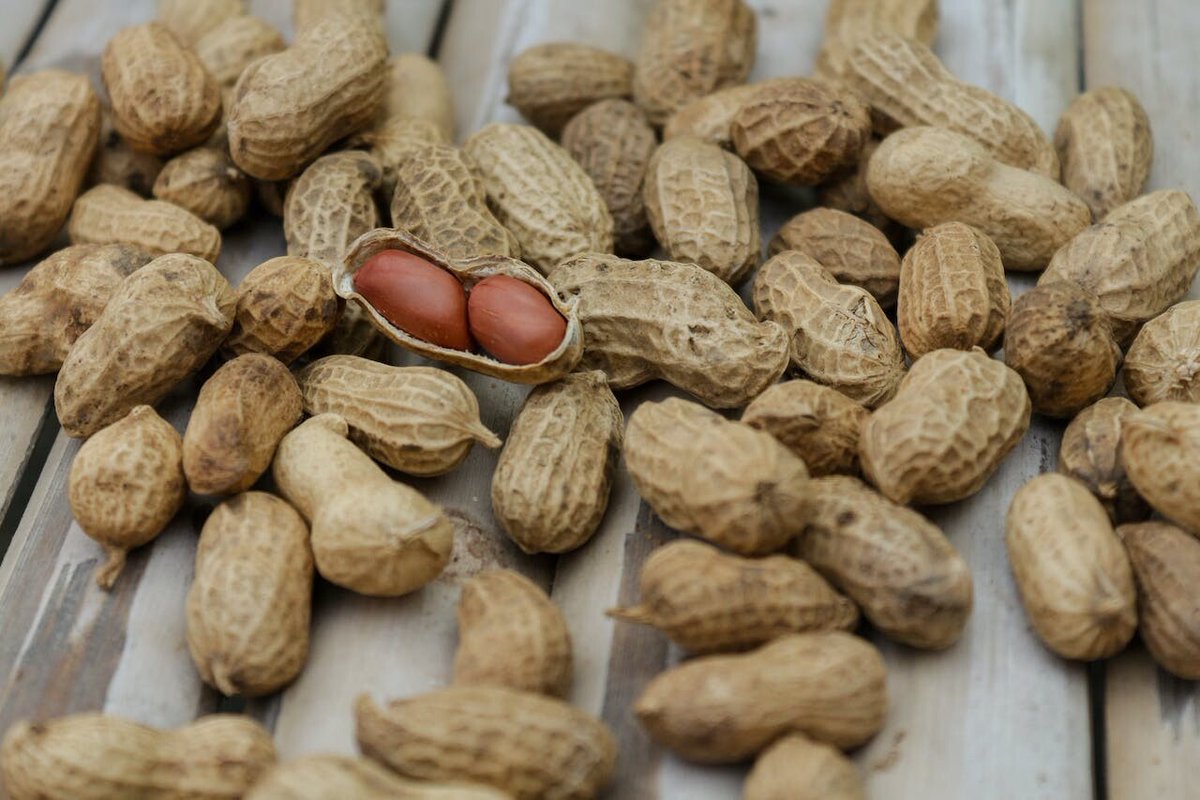 If you start having serious allergic symptoms, like swelling of the mouth or throat or trouble breathing, use the epinephrine auto-injector right away. Also use it right away if your symptoms involve two different parts of the body, like hives with vomiting. Then call 911 and have someone take you to the emergency room. You need to be under medical supervision because even if the worst seems to have passed, a second wave of serious symptoms can happen.
If you start having serious allergic symptoms, like swelling of the mouth or throat or trouble breathing, use the epinephrine auto-injector right away. Also use it right away if your symptoms involve two different parts of the body, like hives with vomiting. Then call 911 and have someone take you to the emergency room. You need to be under medical supervision because even if the worst seems to have passed, a second wave of serious symptoms can happen.
The doctor can also give you an allergy action plan, which helps you prepare for, recognize, and treat an allergic reaction. Share the plan with anyone else who needs to know, such as relatives, school officials, and coaches. Also consider wearing a medical alert bracelet.
Keeping epinephrine on hand at all times should be just part of your action plan. It’s also a good idea to carry an over-the-counter (OTC) antihistamine as this can help treat mild allergy symptoms. But never use
antihistaminesas a replacement for epinephrine shot in life-threatening reactions.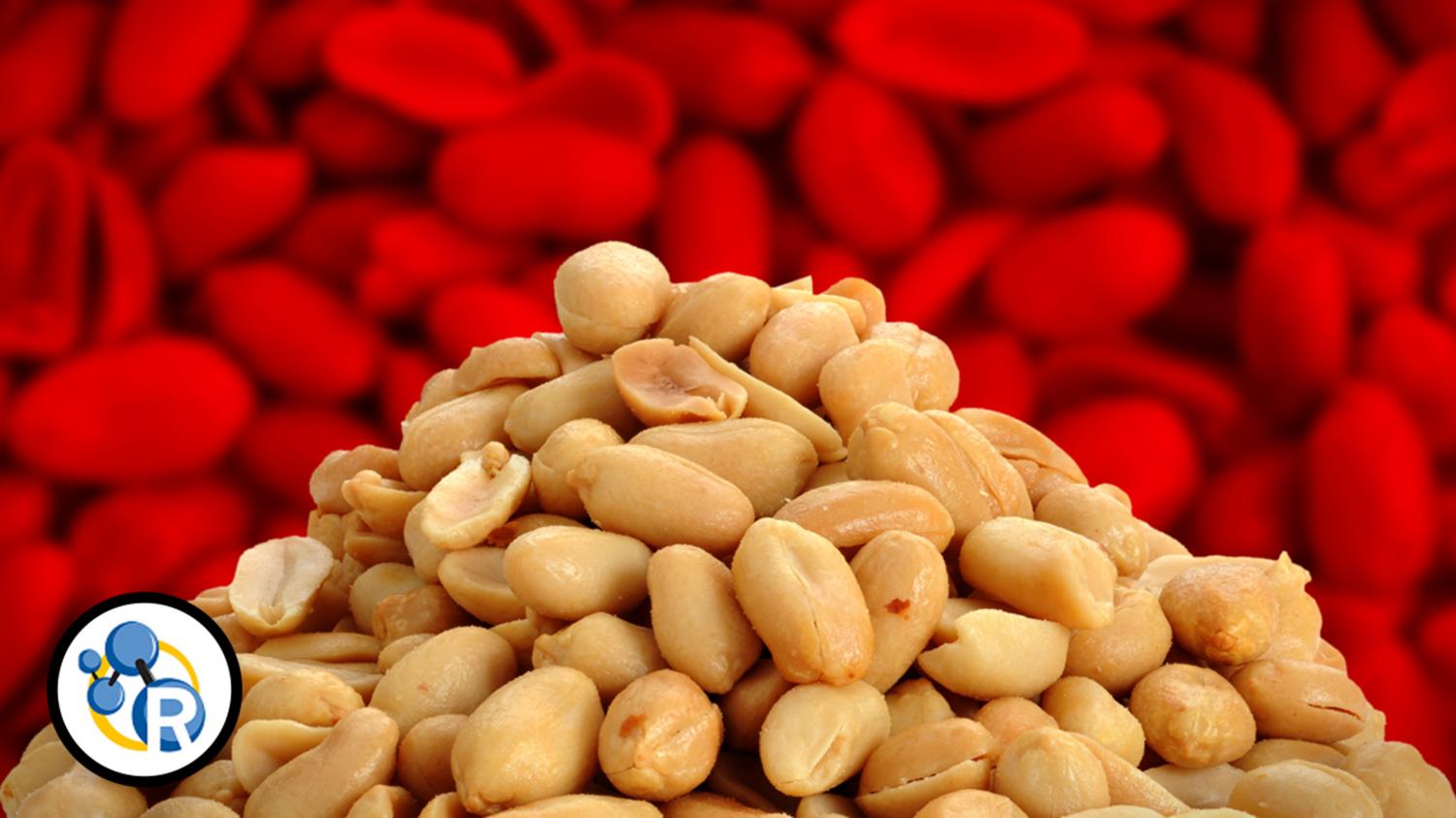 Always use the epinephrine shot as the first treatment.
Always use the epinephrine shot as the first treatment.
p
Living With Peanut or Tree Nut Allergy
If allergy skin testing shows that you have a peanut or tree nut allergy, an
allergistwill provide guidelines on what to do.
The best way to prevent a reaction is to avoid peanuts and tree nuts. Avoiding nuts means more than just not eating them. It also means not eating any foods that might contain tree nuts or peanuts as ingredients.
The best way to be sure a food is nut free is to read the label. Manufacturers of foods sold in the United States must state on their labels whether foods contain peanuts or tree nuts. Check the ingredients list first.
After checking the ingredients list, look on the label for phrases like these:
- “may contain tree nuts”
- “produced on shared equipment with tree nuts or peanuts”
People who are allergic to nuts should avoid foods with these statements on the label. Although these foods might not use nut ingredients, the warnings are there to let people know the food may contain small traces of nuts. That can happen through something called “cross-contamination.” This is when nuts get into a food product because it is made or served in a place that uses nuts in other foods. Manufacturers are not required to list peanuts or tree nuts on the label when there might be accidental cross-contamination, but many do.
That can happen through something called “cross-contamination.” This is when nuts get into a food product because it is made or served in a place that uses nuts in other foods. Manufacturers are not required to list peanuts or tree nuts on the label when there might be accidental cross-contamination, but many do.
Some of the highest-risk foods for people with peanut or tree nut allergy include:
- Cookies and baked goods. Even if baked goods don’t contain nut ingredients, it is possible that they came into contact with peanut or tree nuts through cross-contamination. Unless you know exactly what went into a food and where it was made, it’s safest to avoid store-bought or bakery cookies and other baked goods.
- Candy. Candies made by small bakeries or manufacturers (or homemade candies) may contain nuts as a hidden ingredient. The safest plan is to eat only candies made by major manufacturers whose labels show they are safe.
- Ice cream.
 Unfortunately, cross-contamination is common in ice cream parlors because of shared scoops. It’s also a possibility in soft-serve ice cream, custard, water ice, and yogurt shops because the same dispensing machine and utensils are often used for lots of different flavors. Instead, do as you would for candy: Buy tubs of ice cream at the supermarket and be sure they’re made by a large manufacturer and the labels indicate they’re safe.
Unfortunately, cross-contamination is common in ice cream parlors because of shared scoops. It’s also a possibility in soft-serve ice cream, custard, water ice, and yogurt shops because the same dispensing machine and utensils are often used for lots of different flavors. Instead, do as you would for candy: Buy tubs of ice cream at the supermarket and be sure they’re made by a large manufacturer and the labels indicate they’re safe. - Asian, African, and other cuisine. African and Asian (especially Thai, Chinese, and Indian) foods often contain peanuts or tree nuts. Mexican and Mediterranean foods may also use nuts, so the risk of cross-contamination is high with these foods.
- Sauces. Many cooks use peanuts or peanut butter to thicken chili and other sauces.
Always be cautious. Even if you’ve eaten a food in the past, manufacturers sometimes change their processes — for example, switching suppliers to a company that uses shared equipment with nuts. Because ingredients can change, it’s important to read the label every time, even if the food was safe in the past. And two foods that seem the same might also have differences in how they’re made.
Because ingredients can change, it’s important to read the label every time, even if the food was safe in the past. And two foods that seem the same might also have differences in how they’re made.
What Else Should I Know?
Here are other things to remember:
- Watch for cross-contamination that can happen on kitchen surfaces and utensils — everything from knives and cutting boards to the toaster. Make sure the knife another family member used to make peanut butter sandwiches is not used to butter your bread and that nut breads are not toasted in the same toaster you use.
- Avoid cooked foods you didn’t make yourself — anything with an unknown list of ingredients.
- Tell everyone who handles the food you eat, from relatives to restaurant waitstaff, that you have a nut allergy. If the manager, chef, or owner of a restaurant is uncomfortable about your request for peanut- or nut-free food preparation, don’t eat there.
- Make school lunches and snacks at home where you can control the preparation.

- Be sure your school knows about your allergy and has an action plan in place for you.
- Keep rescue medicine (including epinephrine) on hand at all times — not in your locker, but in a pocket, purse, or bookbag that’s always with you.
Living with a food allergy can seem hard at times. But as more and more people are diagnosed with food allergies, businesses and restaurants are increasingly aware of the risks they face.
If friends you’re visiting or eating lunch with don’t know about your food allergy, tell them in plenty of time to make some simple preparations (such as not sharing your drink after eating that peanut butter sandwich!). Chances are, they’ll understand. As your friends, they probably hope you’ll be as considerate when it comes to taking care of them!
Peanut allergy – Symptoms and causes
Overview
Peanut allergy is one of the most common causes of severe allergy attacks. For some people with peanut allergy, even tiny amounts of peanuts can cause a serious reaction that can even be life-threatening (anaphylaxis).
For some people with peanut allergy, even tiny amounts of peanuts can cause a serious reaction that can even be life-threatening (anaphylaxis).
Peanut allergy has been increasing in children. Even if you or your child has had only a mild allergic reaction to peanuts, it’s important to talk to your doctor. There is still a risk of a more serious future reaction.
Products & Services
Show more products from Mayo Clinic
Symptoms
An allergic response to peanuts usually occurs within minutes after exposure. Peanut allergy signs and symptoms can include:
- Skin reactions, such as hives, redness or swelling
- Itching or tingling in or around the mouth and throat
- Digestive problems, such as diarrhea, stomach cramps, nausea or vomiting
- Tightening of the throat
- Shortness of breath or wheezing
- Runny nose
Anaphylaxis: A life-threatening reaction
Peanut allergy is the most common cause of food-induced anaphylaxis, a medical emergency that requires treatment with an epinephrine (adrenaline) autoinjector (EpiPen, Auvi-Q, others) and a trip to the emergency room.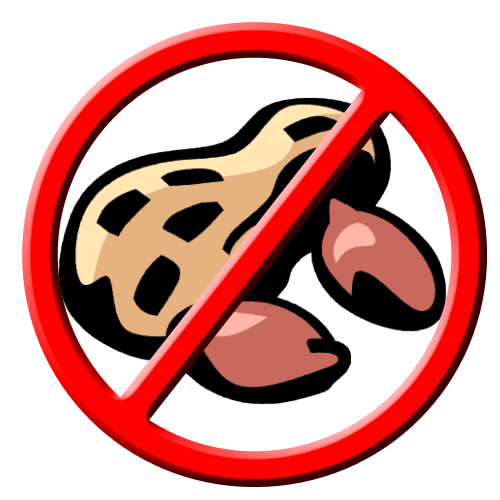
Anaphylaxis signs and symptoms can include:
- Constriction of airways
- Swelling of the throat that makes it difficult to breathe
- A severe drop in blood pressure (shock)
- Rapid pulse
- Dizziness, lightheadedness or loss of consciousness
When to see a doctor
Talk to your doctor if you have had any signs or symptoms of peanut allergy.
Seek emergency treatment if you have a severe reaction to peanuts, especially if you have any signs or symptoms of anaphylaxis. Call 911 or your local emergency number if you or someone else displays severe dizziness, severe trouble breathing or loss of consciousness.
Causes
Peanut allergy occurs when your immune system mistakenly identifies peanut proteins as something harmful. Direct or indirect contact with peanuts causes your immune system to release symptom-causing chemicals into your bloodstream.
Exposure to peanuts can occur in various ways:
- Direct contact. The most common cause of peanut allergy is eating peanuts or peanut-containing foods. Sometimes direct skin contact with peanuts can trigger an allergic reaction.
- Cross-contact. This is the unintended introduction of peanuts into a product. It’s generally the result of a food being exposed to peanuts during processing or handling.
- Inhalation. An allergic reaction may occur if you inhale dust or aerosols containing peanuts, from a source such as peanut flour or peanut oil cooking spray.
Risk factors
It isn’t clear why some people develop allergies while others don’t. However, people with certain risk factors have a greater chance of developing peanut allergy.
Peanut allergy risk factors include:
- Age. Food allergies are most common in children, especially toddlers and infants.
 As you grow older, your digestive system matures, and your body is less likely to react to food that triggers allergies.
As you grow older, your digestive system matures, and your body is less likely to react to food that triggers allergies. - Past allergy to peanuts. Some children with peanut allergy outgrow it. However, even if you seem to have outgrown peanut allergy, it may recur.
- Other allergies. If you’re already allergic to one food, you may be at increased risk of becoming allergic to another. Likewise, having another type of allergy, such as hay fever, increases your risk of having a food allergy.
- Family members with allergies. You’re at increased risk of peanut allergy if other allergies, especially other types of food allergies, are common in your family.
- Atopic dermatitis. Some people with the skin condition atopic dermatitis (eczema) also have a food allergy.
Complications
Complications of peanut allergy can include anaphylaxis. Children and adults who have a severe peanut allergy are especially at risk of having this life-threatening reaction.
Prevention
According to recent studies, there is strong evidence that introducing at-risk babies to peanuts as early as 4 to 6 months of age may reduce their risk of developing food allergies by up to 80%. Babies at risk for peanut allergy include those with mild to severe eczema, egg allergy, or both. Before introducing your baby to peanuts, discuss the best approach with your child’s doctor.
5 Surprising Truths About Peanut Allergies You Need to Know
Peanut allergies—already one of the most common in children these days—are on the rise. They’ve increased by 21 percent since 2010 and impact upwards of 6.1 million people around the world. Yet despite how prevalent the condition is, there are still a lot of misconceptions that many people (even doctors!) don’t talk about.
Here, Mark Holbreich, MD, a board certified allergist practicing in Indianapolis, Indiana, and a fellow of the American Academy of Allergy, Asthma and Immunology, shares five little-known facts about peanut allergies. The info will help you better protect yourself and your loved ones, whether or not you have a peanut allergy in the family. Because chances are, you know someone who’s allergic, and the more informed you are, the safer everyone is.
The info will help you better protect yourself and your loved ones, whether or not you have a peanut allergy in the family. Because chances are, you know someone who’s allergic, and the more informed you are, the safer everyone is.
Fact No. 1: Many kids who develop peanut allergies had eczema as babies.
Ever wonder why some kids develop peanut allergies, and others don’t? Experts believe it has to do with exposure to peanuts through damaged skin—before solid foods are even introduced, says Dr. Holbreich. “In babies with atopic dermatitis—a.k.a. eczema—the skin is scaly and itchy,” he says. When peanut protein comes in contact with a baby’s impacted skin, it can enter the bloodstream and create a food allergy or sensitivity, says Dr. Holbreich. (In fact, most food allergies, including egg, soy, wheat, and cow’s milk, develop this way, after initial exposure via the skin.)
Eczema causes patches of dry, itchy skin and on the hands, feet, neck, upper chest, eyelids, inside the bend of the elbows and knees, and in infants, the face and scalp.
KwarkotGetty Images
Peanut protein is resilient. It can spread easily throughout a home and is even resistant to standard cleaning methods, according to research published in The Journal of Allergy and Clinical Immunology—so in homes where peanuts are eaten exposure is very likely. And while that’s not necessarily a bad thing (not all babies with eczema go on to develop peanut allergies!), it may explain why peanut allergies develop in the first place.
Fact No. 2: Trace amounts of peanut exposure are unlikely to cause a severe reaction.
If you have a child with a peanut allergy, it can be tempting to steer clear of all products with any trace of peanuts, completely avoiding what experts call “precautionary labeling.” However, food labels that say things like “May contain peanuts,” “Trace amounts of peanuts,” or “Manufactured in a facility with peanuts” are probably OK, says Dr. Holbreich.
Only 10 percent of products that list “may contain peanuts” have detectable peanut protein.
According to one study published in the World Allergy Organization Journal, only 10 percent of products that list “may contain peanuts” have detectable peanut protein. “Fear about food allergy is a problem, and some health professionals feed into this by making dire predictions about accidental reactions,” says Dr. Holbreich. “I reassure families that a peanut allergy is manageable with reasonable precautions,” such as avoiding peanuts and foods containing them but not worrying too much about trace amounts. However, he notes that the advice on precautionary labels can vary significantly from specialist to specialist. “Always rely on the advice your provider gives you,” he says.
Fact No. 3: Death from peanut allergies is very rare.
If you or a loved one is allergic to peanuts or another food, the fear of a fatal reaction is real. Yet while up to 5 percent of the U.S. population has suffered from anaphylaxis—a severe, potentially life-threatening allergic reaction that can occur within seconds of exposure to something you’re allergic to—the risk of fatal anaphylaxis is less than 1 percent. “For many parents, there’s a strong fear that their child can die from peanut ingestion,” says Dr. Holbreich. “But when you look at the statistics, it’s an extremely rare occurrence.”
“For many parents, there’s a strong fear that their child can die from peanut ingestion,” says Dr. Holbreich. “But when you look at the statistics, it’s an extremely rare occurrence.”
If your child does have an anaphylactic response to peanuts or any other food, keep in mind that epinephrine (you’ve probably heard of this as an epi pen) is the best treatment—not Benadryl or steroids, which are often administered in the emergency room. “We know that Benadryl doesn’t help with allergic reactions to peanuts because it takes 30 minutes to get into your system, and allergic reactions need to be treated more quickly,” says Dr. Holbreich, who says many parents report feeling hesitant to inject their children with epinephrine. “It’s important to remember that epinephrine is the only way to successfully treat an allergic reaction,” he says. “And it has no side effects.”
Fact No. 4: You may be able to prevent peanut allergies.
Given that most peanut allergies persist for life, prevention is key. Luckily, one groundbreaking study conducted in 2015 found that feeding peanuts to infants before 11 months may reduce peanut allergy prevalence by 70 to 80 percent. In fact, this research led the American Academy of Pediatrics and allergy organizations worldwide to create new guidelines urging parents to introduce peanut foods to infants early on, as young as 4 months old.
Luckily, one groundbreaking study conducted in 2015 found that feeding peanuts to infants before 11 months may reduce peanut allergy prevalence by 70 to 80 percent. In fact, this research led the American Academy of Pediatrics and allergy organizations worldwide to create new guidelines urging parents to introduce peanut foods to infants early on, as young as 4 months old.
Introduce peanut foods to infants early on, as young as 4 months old.
“What we know is that introducing a diversity of food to children starting at an early age is important,” says Dr. Holbreich. “The earlier a child’s immune system sees peanuts, eggs, dairy and fish, the less reactive that system may become to those foods.”
Fact No. 5: There are new treatment options available to lessen the severity of allergic reactions from peanuts.
Over the past 10 years, allergists started doing something called Oral Induction Tolerance (OIT).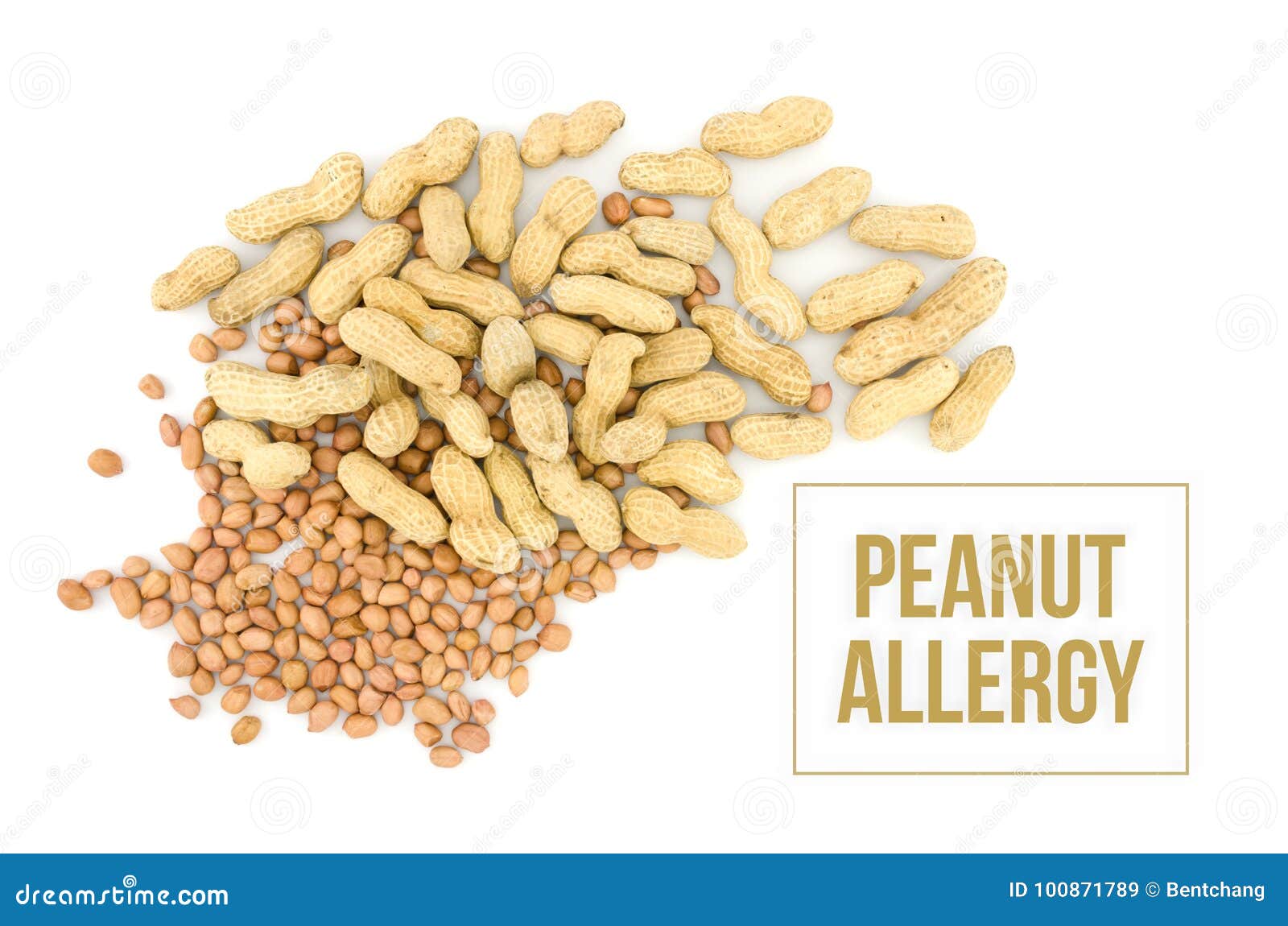 During this in-office treatment, patients are given tiny, gradually increasing amounts of an allergenic food with the hope of desensitizing the patient to that food allergy. In January 2020, the U.S. Food and Drug Administration (FDA) approved the first OIT therapy for kids ages 4 through 17 with a confirmed peanut allergy diagnosis.
During this in-office treatment, patients are given tiny, gradually increasing amounts of an allergenic food with the hope of desensitizing the patient to that food allergy. In January 2020, the U.S. Food and Drug Administration (FDA) approved the first OIT therapy for kids ages 4 through 17 with a confirmed peanut allergy diagnosis.
The goal of the treatment is to increase the dose until a child gets the equivalent of one or two peanuts “because we know that most accidental exposures involve about one half of a peanut,” says Dr. Holbreich. “The idea is that if we can get children to tolerate a therapeutic dose of one or two peanuts, they’ll be better able to handle exposure in an emergency setting.” When he hears from worried parents with children who have peanut allergies, he points to this new treatment and urges them to remain hopeful.
“If you have a young child with a food allergy, I believe there’s a good chance that there will be even more treatments available for her by the time she goes off to college,” he says. “In the next 10 to 15 years, I think we’ll have several options for people with peanut allergies as well as a number of other food allergies.”
“In the next 10 to 15 years, I think we’ll have several options for people with peanut allergies as well as a number of other food allergies.”
This content is created and maintained by a third party, and imported onto this page to help users provide their email addresses. You may be able to find more information about this and similar content at piano.io
Peanut allergy: an overview
CMAJ. 2003 May 13; 168(10): 1279–1285.
From the Division of Pediatric Allergy and Clinical Immunology (Al-Muhsen) and the Divisions of Allergy and Clinical Immunology and of Rheumatology, Department of Pediatrics (Kagan), Montreal Children’s Hospital, McGill University Health Centre; and the Divisions of Clinical Epidemiology and of Allergy and Clinical Immunology, Department of Medicine (Clarke), Montreal General Hospital, McGill University Health Centre, Montréal, Que.
Copyright © 2003 Canadian Medical Association or its licensorsThis article has been cited by other articles in PMC.
Abstract
PEANUT ALLERGY ACCOUNTS FOR THE MAJORITY of severe food-related allergic reactions. It tends to present early in life, and affected individuals generally do not outgrow it. In highly sensitized people, trace quantities can induce an allergic reaction. In this review, we will discuss the prevalence, clinical characteristics, diagnosis, natural history and management of peanut allergy.
Food allergies affect between 4% and 8% of children and between 1% and 2% of adults.1,2,3 They occur most often in young children and in individuals with a personal or family history of other atopic diseases.4,5,6 The majority of children outgrow their food allergies, and the foods can safely be reintroduced when they are older.7,8,9
The perceived prevalence of food allergies is substantially higher than the actual prevalence. Up to 30% of the general population believe they have a food allergy,10,11 and up to 30% of parents believe that their children have a food allergy.
Up to 30% of the general population believe they have a food allergy,10,11 and up to 30% of parents believe that their children have a food allergy.
Eight foods are responsible for more than 90% of food allergies: cow’s milk, eggs, soy, wheat, peanuts, tree nuts (walnuts, hazelnuts, almonds, cashews, pecans and pistachios), fish and shellfish.12,13 All food allergies have the potential to induce anaphylaxis, but some foods are more likely than others to cause potentially life-threatening reactions. The food allergies most commonly associated with anaphylaxis (those to peanuts, tree nuts, fish and shellfish) are the ones least likely to resolve.
Data on the prevalence of food-induced anaphylaxis are limited because there is no requirement for mandatory reporting; however, of all emergency department visits because of anaphylactic events, food allergies account for the greatest proportion, and peanuts and tree nuts are responsible for the majority of serious events. 14,15,16,17
14,15,16,17
Peanut allergy deserves particular attention. It accounts for the majority of severe food-related allergic reactions, it tends to present early in life, it does not usually resolve, and in highly sensitized people, trace quantities can induce an allergic reaction.5,18,19,20,21,22,23,24,25 In this review, we will discuss the prevalence, clinical characteristics, diagnosis, natural history and management of peanut allergy.
Prevalence
Several population-based studies have estimated the prevalence of peanut allergy.22,26,27,28 Tariq and colleagues22 followed a cohort on the Isle of Wight from birth until the age of 4 years.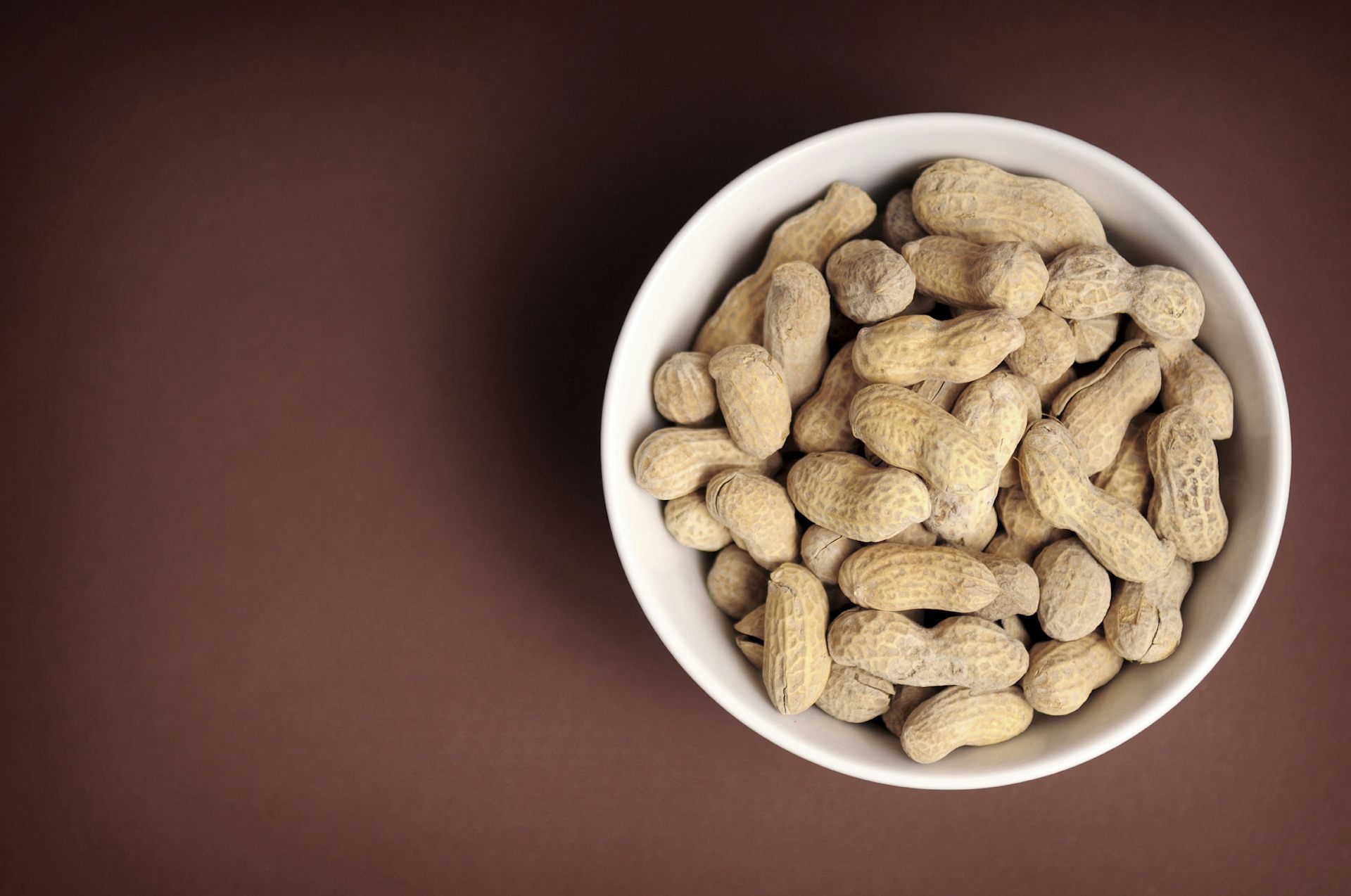 Families were asked about allergic reactions attributed to peanut or tree nut ingestion, skin prick tests were conducted, and peanut-specific IgE was measured. At age 4, 1.1% of the 1218 children were sensitized to peanuts, and 0.5% had had an allergic reaction to peanuts. An additional 1.2% of children were sensitized to tree nuts, with 0.2% having experienced an allergic reaction. On the basis of this and other studies that have reported similar prevalences,26,27,28 the estimated prevalence of peanut allergy in developed countries is between 0.6% and 1.0%. Recently, a follow-up study29 demonstrated that the prevalence of peanut allergy had increased to 1.5% on the Isle of Wight, which suggests that the problem is growing.
Families were asked about allergic reactions attributed to peanut or tree nut ingestion, skin prick tests were conducted, and peanut-specific IgE was measured. At age 4, 1.1% of the 1218 children were sensitized to peanuts, and 0.5% had had an allergic reaction to peanuts. An additional 1.2% of children were sensitized to tree nuts, with 0.2% having experienced an allergic reaction. On the basis of this and other studies that have reported similar prevalences,26,27,28 the estimated prevalence of peanut allergy in developed countries is between 0.6% and 1.0%. Recently, a follow-up study29 demonstrated that the prevalence of peanut allergy had increased to 1.5% on the Isle of Wight, which suggests that the problem is growing.
Pathophysiology
Although many foods can cause clinical syndromes in susceptible individuals, the allergic reaction provoked by peanuts is strictly an IgE-mediated type I hypersensitivity reaction. In such reactions, peanut-specific IgE antibodies bind to high-affinity receptors on mast cells and basophils. At least 7 peanut proteins have been identified that confer allergy. When peanut allergens penetrate mucosal barriers, cell-bound IgE and peanut allergens crosslink, which results in degranulation of preformed allergic mediators and subsequent cell activation. These cells may then produce a variety of cytokines and chemokines, which recruit other inflammatory cells and contribute to the IgE-mediated late-phase allergic response.30
In such reactions, peanut-specific IgE antibodies bind to high-affinity receptors on mast cells and basophils. At least 7 peanut proteins have been identified that confer allergy. When peanut allergens penetrate mucosal barriers, cell-bound IgE and peanut allergens crosslink, which results in degranulation of preformed allergic mediators and subsequent cell activation. These cells may then produce a variety of cytokines and chemokines, which recruit other inflammatory cells and contribute to the IgE-mediated late-phase allergic response.30
Clinical characteristics
The clinical expression of peanut allergy is fairly predictable, and it has a tendency to be severe, although the severity may vary with different episodes of ingestion.5,18,20,21 The first allergic reaction to peanuts develops in most children between 14 and 24 months of age, and the first reaction most commonly occurs at home. 20,21 According to a voluntary registry,20 about half of all children with peanut allergy have allergic manifestations in 1 target-organ system, 30% have symptoms in 2 systems, 10% to 15% in 3 systems, and 1% in 4 systems. The systems affected are listed in .
20,21 According to a voluntary registry,20 about half of all children with peanut allergy have allergic manifestations in 1 target-organ system, 30% have symptoms in 2 systems, 10% to 15% in 3 systems, and 1% in 4 systems. The systems affected are listed in .
About 20% to 30% of food-induced anaphylactic events are characterized by a biphasic response, in which allergic symptoms recur 1 to 8 hours after the initial symptoms have resolved.31 Concomitant asthma and delay in administering epinephrine are risk factors for poor outcome of peanut anaphylaxis.18,20
One peanut contains about 200 mg of protein.32 In most people with peanut allergy, symptoms develop after substantially less than 1 peanut is ingested, and highly allergic people can react to trace amounts. In a study designed to determine the minimum dose of peanut protein capable of eliciting an allergic reaction in highly sensitized individuals, subjective symptoms were reported with doses as low as 100 μg, and objective signs were evident at 2 mg. 25 Similar conclusions were drawn from a recent consensus publication that identified threshold doses of foods in people with allergies.33
25 Similar conclusions were drawn from a recent consensus publication that identified threshold doses of foods in people with allergies.33
In more than 70% of children with peanut allergy, symptoms develop at their first known exposure.5,20,21 Because IgE-mediated allergic reactions require an initial exposure to an allergen to induce immunologic sensitization, it seems apparent that occult exposure occurs. Possible routes of occult sensitization include fetal exposure to allergens ingested by the mother and infant exposure from breast milk.34,35,36 Although prospective intervention studies have resulted in conflicting reports about the role of breast milk in the expression of atopy, it seems prudent to recommend that mothers who are breast-feeding infants at risk for atopy avoid foods that could cause allergic reactions, particularly peanuts.35 An infant is deemed at risk for atopy if both parents, or one parent and a sibling, have atopic features.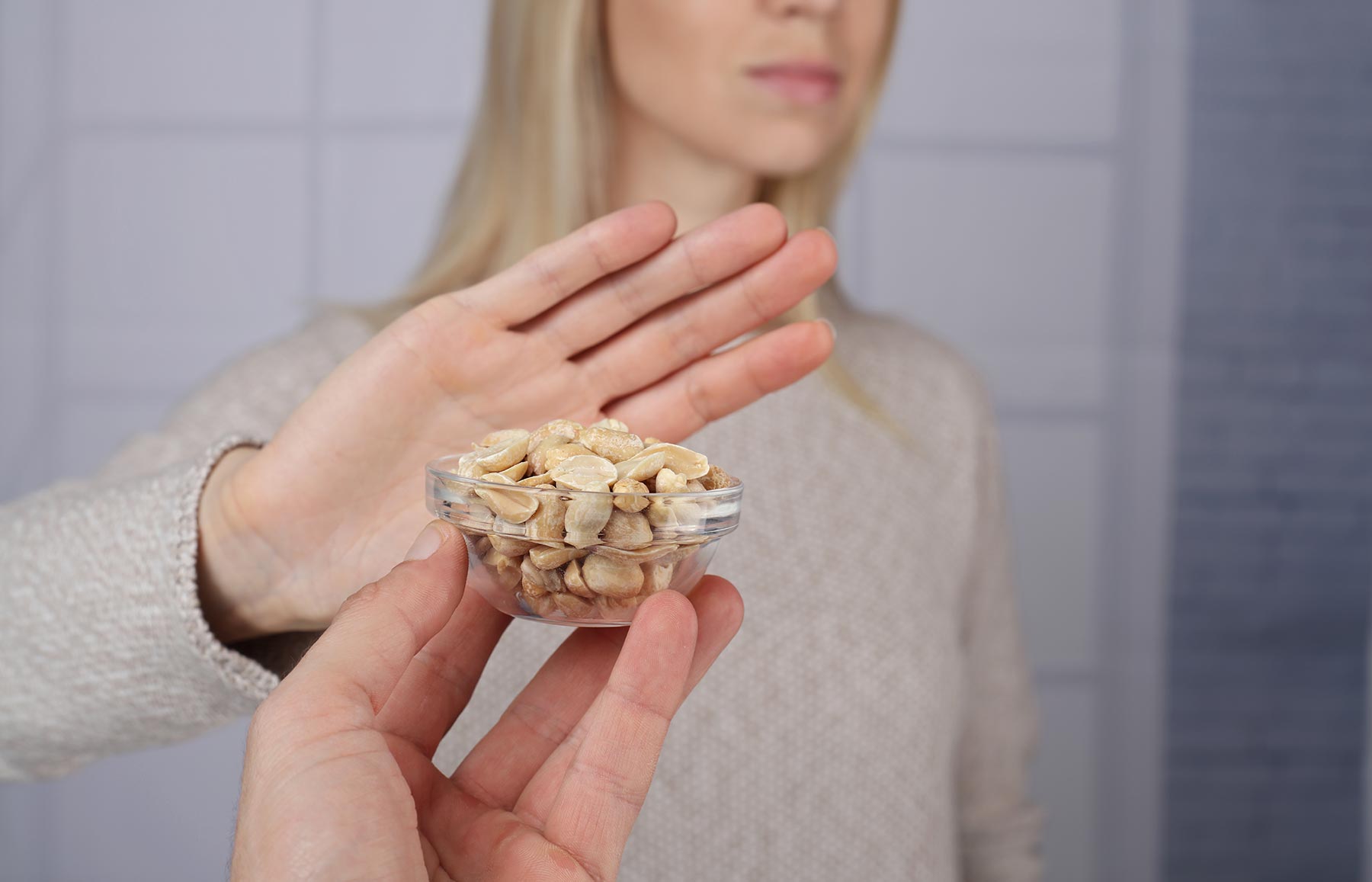
Diagnosis
The diagnosis of a suspected food allergy begins with a medical history and a physical examination. It is confirmed with the detection of peanut-specific IgE, either by means of a skin prick test or fluoroenzyme immunoassay (Pharmacia ImmunoCAP-FEIA). When there is doubt about the diagnosis, oral food challenges can be performed. The characteristics of diagnostic tests for peanut allergy are listed in .
The medical history for a suspected IgE-mediated reaction should focus on the type and quantity of food ingested, the time of symptom onset, the severity and duration of symptoms, and the medical treatment administered. Personal or family details of atopy are also useful. Because most IgE-mediated reactions occur within 60 minutes after ingestion but may take as long as 4 hours after ingestion, symptoms occurring later than this are unlikely to have resulted from food allergy.21 Typically, minor allergic symptoms last less than 1 hour, but severe reactions may be protracted ().
Fig. 1: Algorithm for the diagnosis of peanut allergy.
IgE tests: in vivo and in vitro
Laboratory tests that identify specific IgE, such as the skin prick test and the ImmunoCAP-FEIA, should be conducted to confirm food allergy. A skin prick test with commercially prepared food extracts is a convenient and inexpensive method (a $20 vial of peanut extract is enough for 100 tests) of detecting IgE bound to dermal mast cells. A drop of glycerinated extract is placed on the forearm, and the skin is pricked through the drop. Positive (histamine) and negative (saline) controls are also tested. Results are available in 15 minutes; a positive result is one in which the wheal from the extract is at least 3 mm larger than that from the negative control.37,38 There is no age limit for food allergy skin testing, but very young and very old people are less likely to produce adequate control wheals.39 These tests are easily conducted and the results easily interpreted by most physicians. Ideally, all patients who require evaluation for food allergy should be seen by an allergist, particularly if they require food challenges. The skin prick test is safe to perform, but systemic reactions have been reported, especially when skin testing is performed at the time of active wheezing or when foods are tested intradermally.40,41,42,43,44,45 No fatal reactions have been reported. In general, skin tests have excellent sensitivity and negative predictive value but poor specificity and positive predictive value.46,47,48,49
Ideally, all patients who require evaluation for food allergy should be seen by an allergist, particularly if they require food challenges. The skin prick test is safe to perform, but systemic reactions have been reported, especially when skin testing is performed at the time of active wheezing or when foods are tested intradermally.40,41,42,43,44,45 No fatal reactions have been reported. In general, skin tests have excellent sensitivity and negative predictive value but poor specificity and positive predictive value.46,47,48,49
The measurement of specific IgE antibodies in serum is useful for determining allergen-specific IgE in vitro. The ImmunoCAP-FEIA is a newer, preferred method and measures allergen-specific IgE bound to standardized allergens. Results are reported semiquantitatively, ranging from < 0. 35 to > 100 kUA/L; values correlate with the probability of clinical reactivity but not with the severity of the reaction. Compared with the skin prick test, ImmunoCAP-FEIA is slightly less sensitive but may have a greater positive predictive value. Predictive values of 95% have been established for 4 foods: peanuts, eggs, milk and fish. For example, at a value of 15 kUA/L, 100% of subjects suspected of having peanut allergy had allergic symptoms after ingesting peanuts. According to published data, the positive and negative predictive values of ImmunoCAP-FEIA to peanuts at a level of 15 kUA/L or greater are 100% and 36%.49,50,51 A serum peanut-specific IgE exceeding this cutoff level would be considered positive, and an oral food challenge would not be warranted. Similar cutoff values have been established for a limited number of foods.
35 to > 100 kUA/L; values correlate with the probability of clinical reactivity but not with the severity of the reaction. Compared with the skin prick test, ImmunoCAP-FEIA is slightly less sensitive but may have a greater positive predictive value. Predictive values of 95% have been established for 4 foods: peanuts, eggs, milk and fish. For example, at a value of 15 kUA/L, 100% of subjects suspected of having peanut allergy had allergic symptoms after ingesting peanuts. According to published data, the positive and negative predictive values of ImmunoCAP-FEIA to peanuts at a level of 15 kUA/L or greater are 100% and 36%.49,50,51 A serum peanut-specific IgE exceeding this cutoff level would be considered positive, and an oral food challenge would not be warranted. Similar cutoff values have been established for a limited number of foods.
ImmunoCAP-FEIA can be performed when traditional skin prick testing is not possible, for example, when antihistamines have been taken or if severe skin conditions prohibit skin testing. Limitations of ImmunoCAP-FEIA include cost (about $10 to $15 per allergen), availability, lack of age-specific norms, limited data for the interpretation of results for foods other than those described above and a sensitivity of less than 100%. ImmunoCAP-FEIA is useful in determining which patients are best suited for food challenges and in diagnosing food allergy when the likelihood of reaction is high.49,50
Limitations of ImmunoCAP-FEIA include cost (about $10 to $15 per allergen), availability, lack of age-specific norms, limited data for the interpretation of results for foods other than those described above and a sensitivity of less than 100%. ImmunoCAP-FEIA is useful in determining which patients are best suited for food challenges and in diagnosing food allergy when the likelihood of reaction is high.49,50
Food challenges
Food challenges are the “gold standard” for diagnosing food allergies. These tests are performed when the medical history does not suggest an IgE-mediated reaction but the skin prick test result or ImmunoCAP-FEIA result is positive, when the history suggests an allergic reaction but confirmatory test results are negative, or when patients are evaluated for possible resolution of a known food allergy. Because the positive predictive value of a skin prick test is about 50%, food challenges are sometimes needed for final diagnosis. Increasingly, the ImmunoCAP-FEIA is being used to determine the best candidates for food challenges. Food challenges can be open, single blind or double blind. The most rigorous and least subjective method is the double-blind placebo-controlled food challenge, which is routinely used for research purposes.52,53,54,55,56
Increasingly, the ImmunoCAP-FEIA is being used to determine the best candidates for food challenges. Food challenges can be open, single blind or double blind. The most rigorous and least subjective method is the double-blind placebo-controlled food challenge, which is routinely used for research purposes.52,53,54,55,56
During a double-blind placebo-controlled food challenge, a person ingests incremental portions of food or placebo, hidden in a masking vehicle or gelatin capsule, at 15- to 30-minute intervals.57 Signs and symptoms of allergic reactions are documented before each dose. If unequivocal signs of an allergic reaction occur, the challenge is stopped and the necessary treatment administered. If no signs appear, the challenge continues until all portions of both the placebo and the suspect food are ingested. If all portions are ingested without an adverse reaction, the patient consumes a normal portion of the food to confirm tolerance. Because there is a risk of inducing a severe allergic reaction, the food challenge must be performed in a hospital by appropriately trained professionals, where access to emergency care and medications are readily available.58
Because there is a risk of inducing a severe allergic reaction, the food challenge must be performed in a hospital by appropriately trained professionals, where access to emergency care and medications are readily available.58
Although the double-blind placebo-controlled food challenge is the “gold standard” to diagnose food allergy, it is time-consuming, requires close supervision by medical personnel and carries a risk of inducing a severe allergic reaction. Therefore, it is essential that patients are appropriately selected for the challenge, based on their clinical history and specific IgE test results.
Natural history
Until recently, peanut allergy was believed to persist indefinitely. In a longitudinal study of the natural history of peanut allergy, Bock23 contacted 32 of 46 eligible patients 2 to 14 years after their peanut allergy had been confirmed by a double-blind placebo-controlled food challenge: 75% had had an allergic reaction to accidentally ingested peanuts in the 5 years preceding contact (50% in the year preceding contact), and the remaining 25% had managed to completely avoid peanuts and had not experienced subsequent reactions.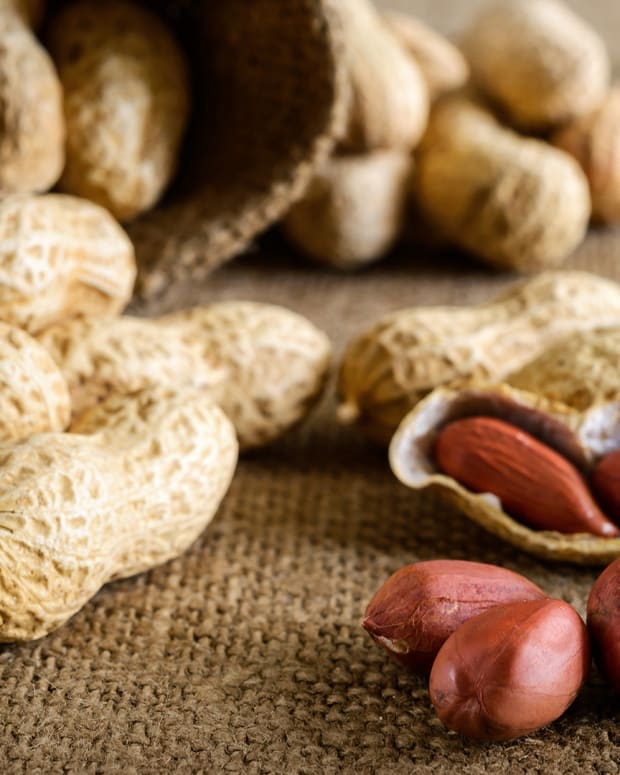 None of the people was known to be able to tolerate peanuts.
None of the people was known to be able to tolerate peanuts.
In an attempt to determine the severity of subsequent accidental peanut ingestion, Vander Leek and Bock59 conducted a prospective study on the natural history of peanut allergy. The parents of 83 children with peanut allergy were contacted annually and asked about accidental exposure to peanuts and the details of the ensuing reaction. Sixty children (72%) experienced allergic reactions during the study. The majority experienced potentially life-threatening reactions after accidental exposure, regardless of the nature of their initial reaction. However, 4 children did not have a reaction to accidental exposure, had low peanut-specific IgE levels and became tolerant to peanuts.59
From these studies, we can see that the majority of children with peanut allergy remain allergic indefinitely and are at high risk for accidental ingestion. The severity of their reactions can vary.
The possibility that peanut allergy can resolve has gained acceptance over the past several years. In 1998, Hourrihane and colleagues60 described the resolution of peanut allergy in 18% of people who had participated in oral peanut challenges. Using a case–control design, 15 children in whom peanut allergy had resolved were compared with 15 children matched for age and sex in whom peanut allergy persisted. There were no differences between the groups with respect to age at the time of initial reaction, severity of initial reaction or peanut-specific IgE levels. However, those whose allergies had resolved had smaller wheals on skin prick test at the time of reassessment and had fewer allergies to other foods. Although clinical and laboratory data were limited for many of the children, this study challenged the previously held belief that peanut allergy persists indefinitely in all patients.
In 1998, Hourrihane and colleagues60 described the resolution of peanut allergy in 18% of people who had participated in oral peanut challenges. Using a case–control design, 15 children in whom peanut allergy had resolved were compared with 15 children matched for age and sex in whom peanut allergy persisted. There were no differences between the groups with respect to age at the time of initial reaction, severity of initial reaction or peanut-specific IgE levels. However, those whose allergies had resolved had smaller wheals on skin prick test at the time of reassessment and had fewer allergies to other foods. Although clinical and laboratory data were limited for many of the children, this study challenged the previously held belief that peanut allergy persists indefinitely in all patients.
Other groups have similarly concluded that peanut allergy can resolve in some people.24,61 Skolnick and coauthors24 reported on the frequency and characteristics of peanut allergy resolution in 223 people who were selected for an oral challenge because they had not had an allergic reaction to peanuts during the preceding year, they had low peanut-specific IgE levels or they met both criteria. Forty-eight (21%) of the children had no reaction from the challenge, which suggests that the peanut allergy had resolved. The children who outgrew their peanut allergy were more likely to have had a mild initial reaction, to have a significantly lower peanut-specific IgE level and to have a smaller wheal on skin prick test at the time of reassessment.
Forty-eight (21%) of the children had no reaction from the challenge, which suggests that the peanut allergy had resolved. The children who outgrew their peanut allergy were more likely to have had a mild initial reaction, to have a significantly lower peanut-specific IgE level and to have a smaller wheal on skin prick test at the time of reassessment.
Management
Approaches to the treatment of an allergic reaction to peanuts are presented in . The mainstay of management is to educate people with peanut allergy and their families to avoid products containing peanuts, to recognize early signs of allergic reactions and to administer self-injectable epinephrine when indicated. Completely avoiding foods that contain peanuts is often difficult, as evidenced by the frequency with which accidental ingestion occurs, and the psychological burden weighs heavily on families.62,63
Fig. 2: Approaches to the management of peanut allergy.
People must be instructed to carefully read all ingredient labels when purchasing prepackaged foods and to ask about the risks of cross-contamination at restaurants and other public eateries. Children should be discouraged from sharing food at school or parties and should be encouraged to wash their hands after meals. School personnel should be made aware that a child has a food allergy and should be provided with photo identification of the child and a list of known allergies. Children with food allergies should always wear MedicAlert bracelets.
Children should be discouraged from sharing food at school or parties and should be encouraged to wash their hands after meals. School personnel should be made aware that a child has a food allergy and should be provided with photo identification of the child and a list of known allergies. Children with food allergies should always wear MedicAlert bracelets.
There is a considerable amount of resource material available to the public from Canadian information and advocacy groups, for example Anaphylaxis Canada (www.anaphylaxis.org) and the Allergy/Asthma Information Association (www.aaia.ca). lists potential sources of peanut where exposure might not be readily anticipated.
The principal treatment of acute allergic reaction is epinephrine. Because delay in administering epinephrine is associated with poor outcome in anaphylactic reactions, and because the benefits of epinephrine far outweigh the risks in otherwise healthy people, prompt administration is recommended.18 People with peanut allergy should be prescribed self-injection devices such as EpiPen, EpiPen Jr and Ana-Kit, and they should be instructed to carry it with them at all times. 18,20,21 In a survey of 101 families of children with food allergy, Sicherer and colleagues64 found that only 71% of the children had a self-injection epinephrine device available, 10% carried epinephrine devices beyond the expiration date, and only 32% were able to demonstrate its correct use. Patients, family members and caregivers should be instructed on the life-saving properties of self-injectable epinephrine.
18,20,21 In a survey of 101 families of children with food allergy, Sicherer and colleagues64 found that only 71% of the children had a self-injection epinephrine device available, 10% carried epinephrine devices beyond the expiration date, and only 32% were able to demonstrate its correct use. Patients, family members and caregivers should be instructed on the life-saving properties of self-injectable epinephrine.
Antihistamines can be used to treat food allergies, but they should serve as an adjunct to, not a replacement for, epinephrine. People with food allergies should be provided with an appropriate dose of a short-acting, first-generation antihistamine, such as diphenhydramine (1 mg/kg) or hydroxyzine (0.5 mg/kg).
After epinephrine is administered, all patients should be transported to a medical facility, where additional treatment can be administered if required. Because up to 30% of anaphylactic reactions have a biphasic component that can occur 1 to 8 hours after the onset of symptoms, patients should be observed for 4 to 8 hours after the onset of allergic symptoms in a facility that can provide emergency care.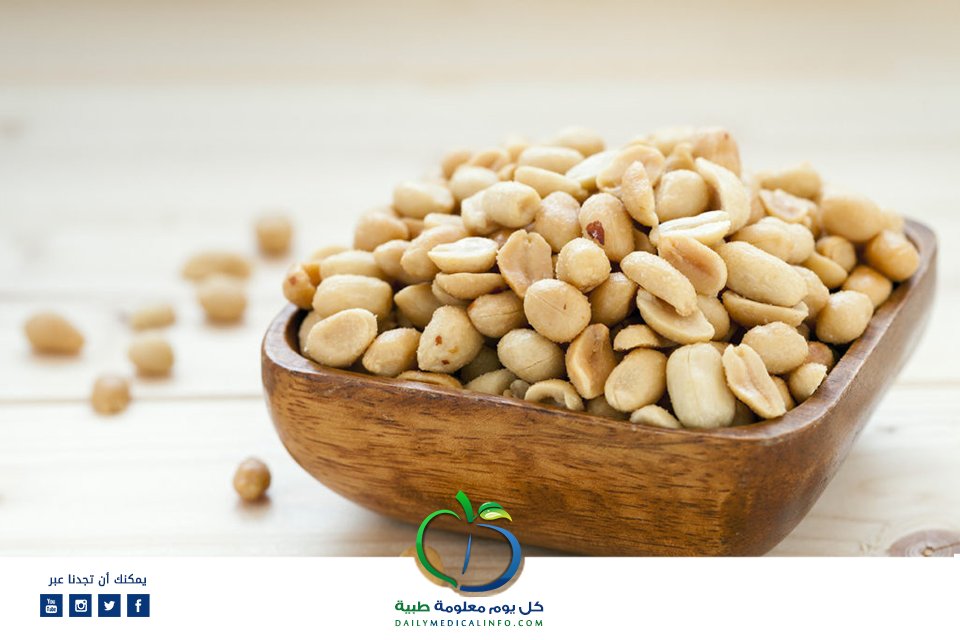 31
31
Future treatments
Therapeutic interventions are actively being pursued to prevent and manage food allergies. Humanized anti-IgE monoclonal antibody therapy and various modified immunotherapy regimes are under investigation, including cytokine modulation, plasmid-DNA immunotherapy, bioengineered proteins and peptide immunotherapy.
Humanized monoclonal IgE antibodies bind to natural IgE and prevent their binding to Fcε receptors on mast cells and basophils. When studied in people with allergic asthma, circulating IgE levels were reduced, and clinical improvement was reported.65,66,67,68 Studies involving individuals with food allergies are underway, and preliminary results are encouraging. In a recent study involving 84 adults with peanut allergy, promising data with the use of humanized monoclonal IgG1 antibody directed against IgE were reported; a significant increase in the threshold dose of peanut flour required to provoke allergic symptoms was demonstrated.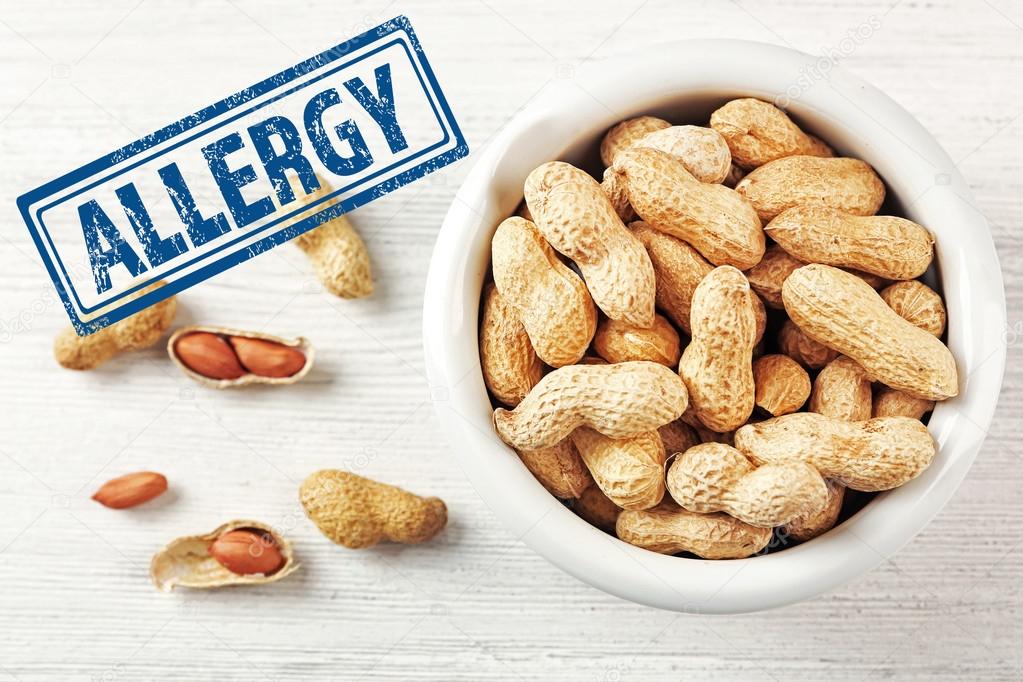 69
69
Traditional immunotherapy has been attempted for peanut desensitization, but an unacceptably high rate of systemic reactions has limited its clinical application.70,71 The potential role for immunotherapy rests with modifications of the peanut protein, specific peptides or cytokine milieu. With the identification, sequencing and characterization of the main peanut proteins, new therapies are on the horizon.72,73,74 Until then, vigilance and the availability of self-injectable epinephrine remain the cornerstones of the management of peanut allergy.
Footnotes
This article has been peer reviewed.
Contributors: Dr. Al-Muhsen was responsible for the literature review and writing the initial draft of the manuscript. All authors contributed to the conception and design of the manuscript, and to revising and approving the final version of the manuscript.
Acknowledgement: Dr. Clarke is a Canadian Institutes of Health Research Investigator.
Clarke is a Canadian Institutes of Health Research Investigator.
Competing interests: None declared.
Correspondence to: Dr. Rhoda S. Kagan, Rm. C-510, Montreal Children’s Hospital, 2300 Tupper St., Montréal QC h4H 1P3; fax 514 412-4390; [email protected]
References
1. Bock SA. Prospective appraisal of complaints of adverse reactions to foods in children during the first 3 years of life. Pediatrics 1987;79(5):683-8. [PubMed]2. Jansen JJ, Kardinaal AF, Huijbers G, Vlieg-Boerstra BJ, Martens BP, Ockhuizen T. Prevalence of food allergy and intolerance in the adult Dutch population. J Allergy Clin Immunol 1994;93(2):446-56. [PubMed]3. Young E, Stoneham MD, Petruckevitch A, Barton J, Rona R. A population study of food intolerance. Lancet 1994;343(8906):1127-30. [PubMed]4. Hourihane JO, Dean TP, Warner JO. Peanut allergy in relation to heredity, maternal diet, and other atopic diseases: results of a questionnaire survey, skin prick testing, and food challenges. BMJ 1996;313:518-21. [PMC free article] [PubMed]5. Hourihane JO, Kilburn SA, Dean P, Warner JO. Clinical characteristics of peanut allergy. Clin Exp Allergy 1997;27(6):634-9. [PubMed]6. Ewan PW. Clinical study of peanut and nut allergy in 62 consecutive patients: new features and associations. BMJ 1996;312:1074-8. [PMC free article] [PubMed]7. Host A. Clinical course of cow’s milk protein allergy and intolerance. Pediatr Allergy Immunol 1998;9(Suppl 11):48-52. [PubMed]8. Sampson HA, McCaskill CC. Food hypersensitivity and atopic dermatitis: evaluation of 113 patients. J Pediatr 1985;107(5):669-75. [PubMed]9. Host A, Halken S. A prospective study of cow milk allergy in Danish infants during the first 3 years of life. Clinical course in relation to clinical and immunological type of hypersensitivity reaction. Allergy 1990;45(8):587-96. [PubMed]10. Sloan AE, Powers ME. A perspective on popular perceptions of adverse reactions to foods.
BMJ 1996;313:518-21. [PMC free article] [PubMed]5. Hourihane JO, Kilburn SA, Dean P, Warner JO. Clinical characteristics of peanut allergy. Clin Exp Allergy 1997;27(6):634-9. [PubMed]6. Ewan PW. Clinical study of peanut and nut allergy in 62 consecutive patients: new features and associations. BMJ 1996;312:1074-8. [PMC free article] [PubMed]7. Host A. Clinical course of cow’s milk protein allergy and intolerance. Pediatr Allergy Immunol 1998;9(Suppl 11):48-52. [PubMed]8. Sampson HA, McCaskill CC. Food hypersensitivity and atopic dermatitis: evaluation of 113 patients. J Pediatr 1985;107(5):669-75. [PubMed]9. Host A, Halken S. A prospective study of cow milk allergy in Danish infants during the first 3 years of life. Clinical course in relation to clinical and immunological type of hypersensitivity reaction. Allergy 1990;45(8):587-96. [PubMed]10. Sloan AE, Powers ME. A perspective on popular perceptions of adverse reactions to foods.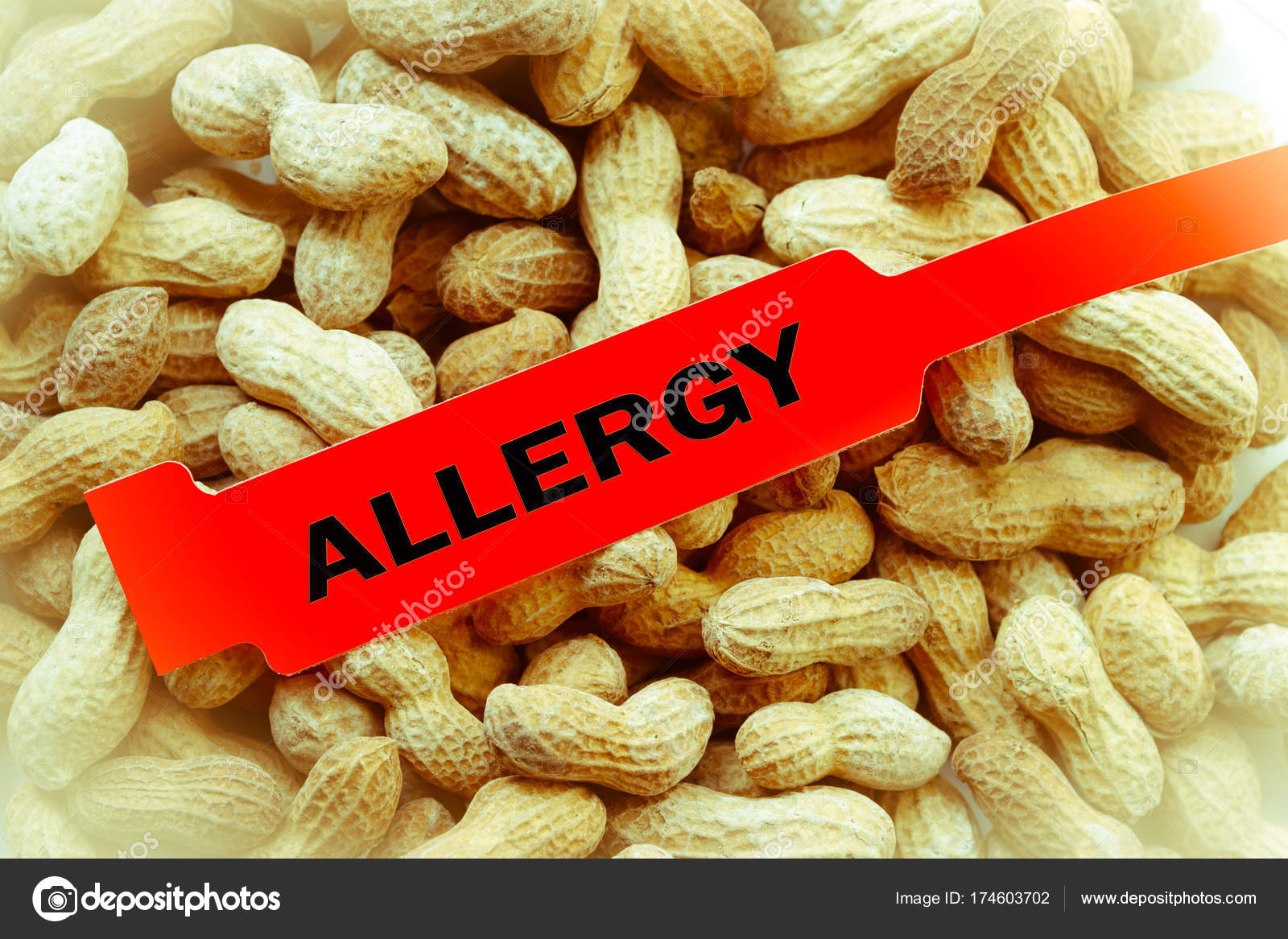 J Allergy Clin Immunol 1986;78(1 Pt 2):127-33. [PubMed]11. Woods RK, Stoney RM, Raven J, Walters EH, Abramson M, Thien FC. Reported adverse food reactions overestimate true food allergy in the community. Eur J Clin Nutr 2002;56(1):31-6. [PubMed]12. Sicherer SH, Sampson HA. Peanut and tree nut allergy. Curr Opin Pediatr 2000;12(6):567-73. [PubMed]13. Hefle SL, Nordlee JA, Taylor SL. Allergenic foods. Crit Rev Food Sci Nutr 1996;36(Suppl):S69-89. [PubMed]14. Kemp SF, Lockey RF, Wolf BL, Lieberman P. Anaphylaxis. A review of 266 cases. Arch Intern Med 1995;155(16):1749-54. [PubMed]
J Allergy Clin Immunol 1986;78(1 Pt 2):127-33. [PubMed]11. Woods RK, Stoney RM, Raven J, Walters EH, Abramson M, Thien FC. Reported adverse food reactions overestimate true food allergy in the community. Eur J Clin Nutr 2002;56(1):31-6. [PubMed]12. Sicherer SH, Sampson HA. Peanut and tree nut allergy. Curr Opin Pediatr 2000;12(6):567-73. [PubMed]13. Hefle SL, Nordlee JA, Taylor SL. Allergenic foods. Crit Rev Food Sci Nutr 1996;36(Suppl):S69-89. [PubMed]14. Kemp SF, Lockey RF, Wolf BL, Lieberman P. Anaphylaxis. A review of 266 cases. Arch Intern Med 1995;155(16):1749-54. [PubMed]
15. Simons FER, Chad ZH, Gold M. Real-time reporting of anaphylaxis in infants, children, and adolescents by physician involved in the Canadian Pediatric Surveillance Program [abstract 536]. J Allergy Clin Immunol 2002;109(1 Pt 2):S181.
16. Mehra S, Salter J, Sussman G, Cairns J, Vadas P. A study of 32 food-related deaths from anaphylaxis: Ontario; 1986-2000 [abstract 537].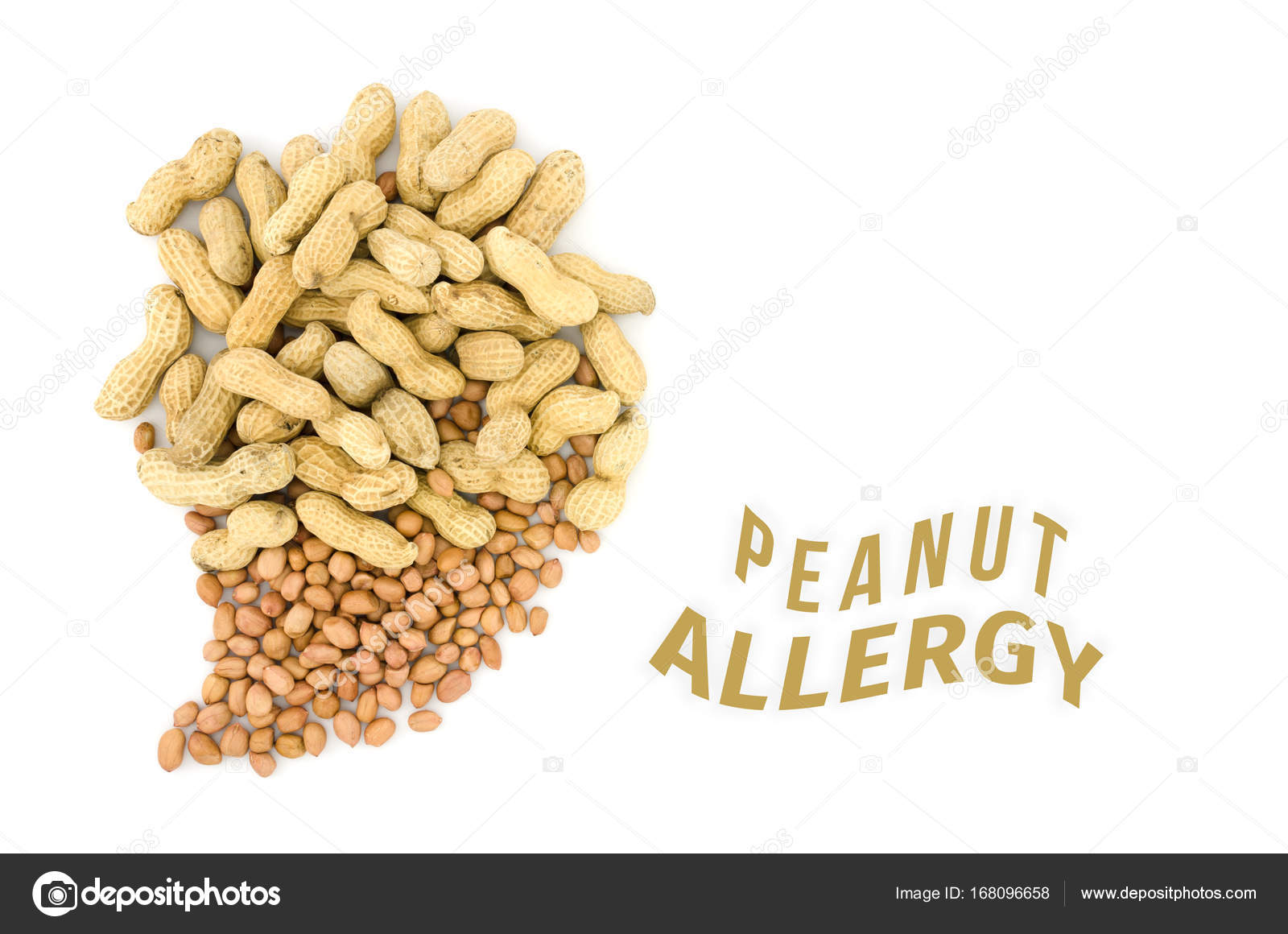 J Allergy Clin Immunol 2002;109(1 Pt 2):S181.
J Allergy Clin Immunol 2002;109(1 Pt 2):S181.
17. Macdougall CF, Cant AJ, Colver AF. How dangerous is food allergy in childhood? The incidence of severe and fatal allergic reactions across the UK and Ireland. Arch Dis Child 2002;86(4):236-9. [PMC free article] [PubMed]18. Sampson HA, Mendelson L, Rosen JP. Fatal and near-fatal anaphylactic reactions to food in children and adolescents. N Engl J Med 1992;327(6):380-4. [PubMed]19. Yocum M, Khan D. Assessment of patients who have experienced anaphylaxis: a 3-year survey. Mayo Clin Proc 1994;69(1):16-23. [PubMed]20. Sicherer SH, Furlong TJ, Munoz-Furlong A, Burks AW, Sampson HA. A voluntary registry for peanut and tree nut allergy: characteristics of the first 5149 registrants. J Allergy Clin Immunol 2001;108(1):128-32. [PubMed]21. Sicherer SH, Burks AW, Sampson HA. Clinical features of acute allergic reactions to peanut and tree nuts in children. Pediatrics 1998;102(1):e6. [PubMed]22. Tariq SM, Stevens M, Matthews S, Ridout S, Twiselton R, Hide DW. Cohort study of peanut and tree nut sensitisation by age of 4 years. BMJ 1996;313:514-7. [PMC free article] [PubMed]23. Bock SA, Atkins FM. The natural history of peanut allergy. J Allergy Clin Immunol 1989;83(5):900-4. [PubMed]24. Skolnick HS, Conover-Walker MK, Koerner CB, Sampson HA, Burks W, Wood RA. The natural history of peanut allergy. J Allergy Clin Immunol 2001; 107(2):367-74. [PubMed]25. Hourihane JB, Kilburn SA, Nordlee JA, Hefle SL, Taylor SL, Warner JO. An evaluation of the sensitivity of subjects with peanut allergy to very low doses of peanut protein: a randomized, double-blind, placebo-controlled food challenge study. J Allergy Clin Immunol 1997;100(5):596-600. [PubMed]26. Kanny G, Moneret-Vautrin DA, Flabbee J, Beaudouin E, Morisset M, Thevenin F. Population study of food allergy in France. J Allergy Clin Immunol 2001;108(1):133-40. [PubMed]27. Emmett SE, Angus FJ, Fry JS, Lee PN.
Tariq SM, Stevens M, Matthews S, Ridout S, Twiselton R, Hide DW. Cohort study of peanut and tree nut sensitisation by age of 4 years. BMJ 1996;313:514-7. [PMC free article] [PubMed]23. Bock SA, Atkins FM. The natural history of peanut allergy. J Allergy Clin Immunol 1989;83(5):900-4. [PubMed]24. Skolnick HS, Conover-Walker MK, Koerner CB, Sampson HA, Burks W, Wood RA. The natural history of peanut allergy. J Allergy Clin Immunol 2001; 107(2):367-74. [PubMed]25. Hourihane JB, Kilburn SA, Nordlee JA, Hefle SL, Taylor SL, Warner JO. An evaluation of the sensitivity of subjects with peanut allergy to very low doses of peanut protein: a randomized, double-blind, placebo-controlled food challenge study. J Allergy Clin Immunol 1997;100(5):596-600. [PubMed]26. Kanny G, Moneret-Vautrin DA, Flabbee J, Beaudouin E, Morisset M, Thevenin F. Population study of food allergy in France. J Allergy Clin Immunol 2001;108(1):133-40. [PubMed]27. Emmett SE, Angus FJ, Fry JS, Lee PN. Perceived prevalence of peanut allergy in Great Britain and its association with other atopic conditions and with peanut allergy in other household members. Allergy 1999;54(4):380-5. [PubMed]28. Sicherer SH, Munoz-Furlong A, Burks AW, Sampson HA. Prevalence of peanut and tree nut allergy in the US determined by a random digit dial telephone survey. J Allergy Clin Immunol 1999;103(4):559-62. [PubMed]29. Grundy J, Matthews S, Bateman B, Dean T, Arshad S. Rising prevalence of allergy to peanut in children: data from 2 sequential cohorts. J Allergy Clin Immunol 2002;110(5):784-9. [PubMed]30. Sampson HA. Food allergy. JAMA 1997;278(22):1888-94. [PubMed]31. Stark BJ, Sullivan TJ. Biphasic and protracted anaphylaxis. J Allergy Clin Immunol 1986;78(1 Pt 1):76-83. [PubMed]
Perceived prevalence of peanut allergy in Great Britain and its association with other atopic conditions and with peanut allergy in other household members. Allergy 1999;54(4):380-5. [PubMed]28. Sicherer SH, Munoz-Furlong A, Burks AW, Sampson HA. Prevalence of peanut and tree nut allergy in the US determined by a random digit dial telephone survey. J Allergy Clin Immunol 1999;103(4):559-62. [PubMed]29. Grundy J, Matthews S, Bateman B, Dean T, Arshad S. Rising prevalence of allergy to peanut in children: data from 2 sequential cohorts. J Allergy Clin Immunol 2002;110(5):784-9. [PubMed]30. Sampson HA. Food allergy. JAMA 1997;278(22):1888-94. [PubMed]31. Stark BJ, Sullivan TJ. Biphasic and protracted anaphylaxis. J Allergy Clin Immunol 1986;78(1 Pt 1):76-83. [PubMed]
32. Goldman M. Peanut allergy: How much peanut is too much? Baltimore (MD): Asthma and Allergy Foundation of America, Maryland–Greater Washington, DC, Chapter Newsletter; April–May 1998.
33. Taylor SL, Hefle SL, Bindslev-Jensen C, Bock SA, Burks AW Jr, Christie L, et al. Factors affecting the determination of threshold doses for allergenic foods: How much is too much? J Allergy Clin Immunol 2002;109(1):24-30. [PubMed]34. Frank L, Marian A, Visser M, Weinberg E, Potter PC. Exposure to peanuts in utero and in infancy and the development of sensitization to peanut allergens in young children. Pediatr Allergy Immunol 1999;10(1):27-32. [PubMed]35. Zeiger RS. Prevention of food allergy and atopic disease. J R Soc Med 1997; 90(Suppl 30):21-33. [PMC free article] [PubMed]36. Vadas P, Wai Y, Burks W, Perelman B. Detection of peanut allergens in breast milk of lactating women. JAMA 2001;285(13):1746-8. [PubMed]37. Bock SA, Lee WY, Remigio L, Holst A, May CD. Appraisal of skin tests with food extracts for diagnosis of food hypersensitivity. Clin Allergy 1978;8(6): 559-64. [PubMed]38. May CD. Objective clinical and laboratory studies of immediate hypersensitivity reactions to foods in asthmatic children. J Allergy Clin Immunol 1976;58 (4):500-15. [PubMed]39. Van Asperen PP, Kemp AS, Mellis CM. Skin test reactivity and clinical allergen sensitivity in infancy. J Allergy Clin Immunol 1984;73(3):381-6. [PubMed]40. Cantani A, Micera M. Can skin prick tests provoke severe allergic reactions? Eur Rev Med Pharmacol Sci 2000;4(5-6):145-8. [PubMed]41. Lin MS, Tanner E, Lynn J, Friday GA Jr. Nonfatal systemic allergic reactions induced by skin testing and immunotherapy. Ann Allergy 1993;71(6):557-62. [PubMed]42. Devenney I, Falth-Magnusson K. Skin prick tests may give generalized allergic reactions in infants. Ann Allergy Asthma Immunol 2000;85(6 Pt 1):457-60. [PubMed]43. Valyasevi MA, Maddox DE, Li JT. Systemic reactions to allergy skin tests. Ann Allergy Asthma Immunol 1999;83(2):132-6. [PubMed]44. Novembre E, Bernardini R, Bertini G, Massai G, Vierucci A. Skin-prick-test-induced anaphylaxis. Allergy 1995;50(6):511-3. [PubMed]45. Lockey R, Benedict L, Turkeltaub P, Bukantz S.
J Allergy Clin Immunol 1976;58 (4):500-15. [PubMed]39. Van Asperen PP, Kemp AS, Mellis CM. Skin test reactivity and clinical allergen sensitivity in infancy. J Allergy Clin Immunol 1984;73(3):381-6. [PubMed]40. Cantani A, Micera M. Can skin prick tests provoke severe allergic reactions? Eur Rev Med Pharmacol Sci 2000;4(5-6):145-8. [PubMed]41. Lin MS, Tanner E, Lynn J, Friday GA Jr. Nonfatal systemic allergic reactions induced by skin testing and immunotherapy. Ann Allergy 1993;71(6):557-62. [PubMed]42. Devenney I, Falth-Magnusson K. Skin prick tests may give generalized allergic reactions in infants. Ann Allergy Asthma Immunol 2000;85(6 Pt 1):457-60. [PubMed]43. Valyasevi MA, Maddox DE, Li JT. Systemic reactions to allergy skin tests. Ann Allergy Asthma Immunol 1999;83(2):132-6. [PubMed]44. Novembre E, Bernardini R, Bertini G, Massai G, Vierucci A. Skin-prick-test-induced anaphylaxis. Allergy 1995;50(6):511-3. [PubMed]45. Lockey R, Benedict L, Turkeltaub P, Bukantz S. Fatalities from immunotherapy (IT) and skin testing (ST). J Allergy Clin Immunol 1987;79:660-77. [PubMed]46. Rance F, Juchet A, Bremont F, Dutau G. Correlations between skin prick tests using commercial extracts and fresh foods, specific IgE, and food challenges. Allergy 1997;52(10):1031-5. [PubMed]47. Eigenmann PA, Sampson HA. Interpreting skin prick tests in the evaluation of food allergy in children. Pediatr Allergy Immunol 1998;9(4):186-91. [PubMed]48. Sampson HA, Albergo R. Comparison of results of skin tests, RAST, and double-blind placebo-controlled food challenges in children with atopic dermatitis. J Allergy Clin Immunol 1984;74:26-33. [PubMed]49. Sampson HA, Ho DG. Relationship between food-specific IgE concentrations and the risk of positive food challenges in children and adolescents. J Allergy Clin Immunol 1997;100(4):444-51. [PubMed]50. Sampson HA. Utility of food-specific IgE concentrations in predicting symptomatic food allergy.
Fatalities from immunotherapy (IT) and skin testing (ST). J Allergy Clin Immunol 1987;79:660-77. [PubMed]46. Rance F, Juchet A, Bremont F, Dutau G. Correlations between skin prick tests using commercial extracts and fresh foods, specific IgE, and food challenges. Allergy 1997;52(10):1031-5. [PubMed]47. Eigenmann PA, Sampson HA. Interpreting skin prick tests in the evaluation of food allergy in children. Pediatr Allergy Immunol 1998;9(4):186-91. [PubMed]48. Sampson HA, Albergo R. Comparison of results of skin tests, RAST, and double-blind placebo-controlled food challenges in children with atopic dermatitis. J Allergy Clin Immunol 1984;74:26-33. [PubMed]49. Sampson HA, Ho DG. Relationship between food-specific IgE concentrations and the risk of positive food challenges in children and adolescents. J Allergy Clin Immunol 1997;100(4):444-51. [PubMed]50. Sampson HA. Utility of food-specific IgE concentrations in predicting symptomatic food allergy.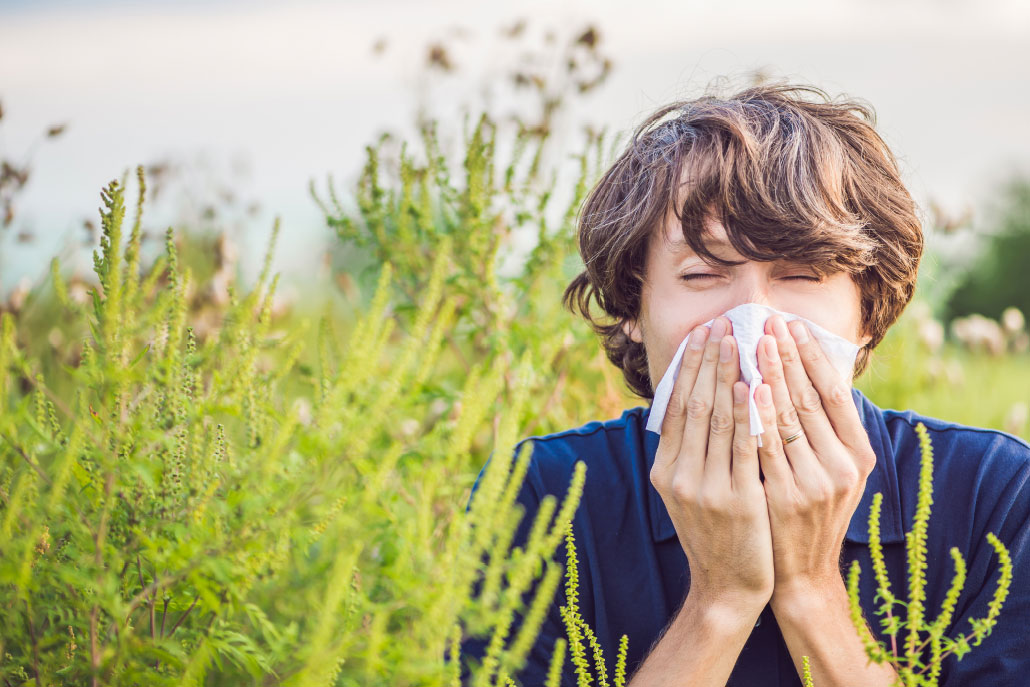 J Allergy Clin Immunol 2001;107(5):891-6. [PubMed]51. Sampson HA. Clinical practice. Peanut allergy. N Engl J Med 2002;346(17): 1294-9. [PubMed]52. Bernstein M, Day JH, Welsh A. Double-blind food challenge in the diagnosis of food sensitivity in the adult. J Allergy Clin Immunol 1982;70(3):205-10. [PubMed]53. Bock SA, Atkins FM. Patterns of food hypersensitivity during sixteen years of double-blind, placebo-controlled food challenges. J Pediatr 1990;117(4):561-7. [PubMed]54. Sampson HA. Immunologically mediated food allergy: the importance of food challenge procedures. Ann Allergy 1988;60(3):262-9. [PubMed]55. Burks AW, Mallory SB, Williams LW, Shirrell MA. Atopic dermatitis: clinical relevance of food hypersensitivity reactions. J Pediatr 1988;113(3):447-51. [PubMed]56. Kivity S, Dunner K, Marian Y. The pattern of food hypersensitivity in patients with onset after 10 years of age. Clin Exp Allergy 1994;24(1):19-22. [PubMed]57.
J Allergy Clin Immunol 2001;107(5):891-6. [PubMed]51. Sampson HA. Clinical practice. Peanut allergy. N Engl J Med 2002;346(17): 1294-9. [PubMed]52. Bernstein M, Day JH, Welsh A. Double-blind food challenge in the diagnosis of food sensitivity in the adult. J Allergy Clin Immunol 1982;70(3):205-10. [PubMed]53. Bock SA, Atkins FM. Patterns of food hypersensitivity during sixteen years of double-blind, placebo-controlled food challenges. J Pediatr 1990;117(4):561-7. [PubMed]54. Sampson HA. Immunologically mediated food allergy: the importance of food challenge procedures. Ann Allergy 1988;60(3):262-9. [PubMed]55. Burks AW, Mallory SB, Williams LW, Shirrell MA. Atopic dermatitis: clinical relevance of food hypersensitivity reactions. J Pediatr 1988;113(3):447-51. [PubMed]56. Kivity S, Dunner K, Marian Y. The pattern of food hypersensitivity in patients with onset after 10 years of age. Clin Exp Allergy 1994;24(1):19-22. [PubMed]57. Bock SA, Sampson HA, Atkins FM, Zeiger RS, Lehrer S, Sachs M, et al. Double-blind, placebo-controlled food challenge (DBPCFC) as an office procedure: a manual. J Allergy Clin Immunol 1988;82:986-97. [PubMed]58. Hamilos DL, Oppenheimer JJ, Nelson HS, Wenzel S, Driscoll S, Lockey RF, et al. Suggested approaches for research protocols involving the potential for life-threatening reactions. J Allergy Clin Immunol 1993;92:1101-20. [PubMed]59. Vander Leek TK, Liu AH, Stefanski K, Blacker B, Bock SA. The natural history of peanut allergy in young children and its association with serum peanut-specific IgE. J Pediatr 2000;137(6):749-55. [PubMed]60. Hourihane JO, Roberts SA, Warner JO. Resolution of peanut allergy: case–control study. BMJ 1998;316:1271-5. [PMC free article] [PubMed]61. Spergel JM, Beausoleil JL, Pawlowski NA. Resolution of childhood peanut allergy. Ann Allergy Asthma Immunol 2000;85(6 Pt 1):473-6. [PubMed]62. Sicherer SH, Noone SA, Munoz-Furlong A.
Bock SA, Sampson HA, Atkins FM, Zeiger RS, Lehrer S, Sachs M, et al. Double-blind, placebo-controlled food challenge (DBPCFC) as an office procedure: a manual. J Allergy Clin Immunol 1988;82:986-97. [PubMed]58. Hamilos DL, Oppenheimer JJ, Nelson HS, Wenzel S, Driscoll S, Lockey RF, et al. Suggested approaches for research protocols involving the potential for life-threatening reactions. J Allergy Clin Immunol 1993;92:1101-20. [PubMed]59. Vander Leek TK, Liu AH, Stefanski K, Blacker B, Bock SA. The natural history of peanut allergy in young children and its association with serum peanut-specific IgE. J Pediatr 2000;137(6):749-55. [PubMed]60. Hourihane JO, Roberts SA, Warner JO. Resolution of peanut allergy: case–control study. BMJ 1998;316:1271-5. [PMC free article] [PubMed]61. Spergel JM, Beausoleil JL, Pawlowski NA. Resolution of childhood peanut allergy. Ann Allergy Asthma Immunol 2000;85(6 Pt 1):473-6. [PubMed]62. Sicherer SH, Noone SA, Munoz-Furlong A. The impact of childhood food allergy on quality of life. Ann Allergy Asthma Immunol 2001;87(6):461-4. [PubMed]63. Primeau MN, Kagan R, Joseph L, Lim H, Dufresne C, Duffy C, et al. The psychological burden of peanut allergy as perceived by adults with peanut allergy and the parents of peanut-allergic children. Clin Exp Allergy 2000;30(8):1135-43. [PubMed]64. Sicherer SH, Forman JA, Noone SA. Use assessment of self-administered epinephrine among food-allergic children and pediatricians. Pediatrics 2000; 105(2):359-62. [PubMed]65. Fahy JV, Fleming HE, Wong HH, Liu JT, Su JQ, Reimann J, et al. The effect of an anti-IgE monoclonal antibody on the early- and late-phase responses to allergen inhalation in asthmatic subjects. Am J Respir Crit Care Med 1997;155(6):1828-34. [PubMed]66. Casale TB, Bernstein IL, Busse WW, LaForce CF, Tinkelman DG, Stoltz RR, et al. Use of an anti-IgE humanized monoclonal antibody in ragweed-induced allergic rhinitis. J Allergy Clin Immunol 1997;100(1):110-21.
The impact of childhood food allergy on quality of life. Ann Allergy Asthma Immunol 2001;87(6):461-4. [PubMed]63. Primeau MN, Kagan R, Joseph L, Lim H, Dufresne C, Duffy C, et al. The psychological burden of peanut allergy as perceived by adults with peanut allergy and the parents of peanut-allergic children. Clin Exp Allergy 2000;30(8):1135-43. [PubMed]64. Sicherer SH, Forman JA, Noone SA. Use assessment of self-administered epinephrine among food-allergic children and pediatricians. Pediatrics 2000; 105(2):359-62. [PubMed]65. Fahy JV, Fleming HE, Wong HH, Liu JT, Su JQ, Reimann J, et al. The effect of an anti-IgE monoclonal antibody on the early- and late-phase responses to allergen inhalation in asthmatic subjects. Am J Respir Crit Care Med 1997;155(6):1828-34. [PubMed]66. Casale TB, Bernstein IL, Busse WW, LaForce CF, Tinkelman DG, Stoltz RR, et al. Use of an anti-IgE humanized monoclonal antibody in ragweed-induced allergic rhinitis. J Allergy Clin Immunol 1997;100(1):110-21. [PubMed]67. MacGlashan DW Jr, Bochner BS, Adelman DC, Jardieu PM, Togias A, McKenzie-White J, et al. Down-regulation of Fc(epsilon)RI expression on human basophils during in vivo treatment of atopic patients with anti-IgE antibody. J Immunol 1997;158(3):1438-45. [PubMed]68. Milgrom H, Fick RB Jr, Su JQ, Reimann JD, Bush RK, Watrous ML, et al. Treatment of allergic asthma with monoclonal anti-IgE antibody. rhuMAb-E25 Study Group. N Engl J Med 1999;341(26):1966-73. [PubMed]69. Leung DY, Sampson HA, Yunginger JW, Burks AW Jr, Schneider LC, Wortel CH. Effect of anti-IgE therapy in patients with peanut allergy. N Engl J Med 2003;348:986-93. [PubMed]70. Oppenheimer JJ, Nelson HS, Bock SA, Christensen F, Leung DY. Treatment of peanut allergy with rush immunotherapy. J Allergy Clin Immunol 1992; 90(2):256-62. [PubMed]71. Nelson HS, Lahr J, Rule R, Bock A, Leung D. Treatment of anaphylactic sensitivity to peanuts by immunotherapy with injections of aqueous peanut extract.
[PubMed]67. MacGlashan DW Jr, Bochner BS, Adelman DC, Jardieu PM, Togias A, McKenzie-White J, et al. Down-regulation of Fc(epsilon)RI expression on human basophils during in vivo treatment of atopic patients with anti-IgE antibody. J Immunol 1997;158(3):1438-45. [PubMed]68. Milgrom H, Fick RB Jr, Su JQ, Reimann JD, Bush RK, Watrous ML, et al. Treatment of allergic asthma with monoclonal anti-IgE antibody. rhuMAb-E25 Study Group. N Engl J Med 1999;341(26):1966-73. [PubMed]69. Leung DY, Sampson HA, Yunginger JW, Burks AW Jr, Schneider LC, Wortel CH. Effect of anti-IgE therapy in patients with peanut allergy. N Engl J Med 2003;348:986-93. [PubMed]70. Oppenheimer JJ, Nelson HS, Bock SA, Christensen F, Leung DY. Treatment of peanut allergy with rush immunotherapy. J Allergy Clin Immunol 1992; 90(2):256-62. [PubMed]71. Nelson HS, Lahr J, Rule R, Bock A, Leung D. Treatment of anaphylactic sensitivity to peanuts by immunotherapy with injections of aqueous peanut extract. J Allergy Clin Immunol 1997;99(6 Pt 1):744-51. [PubMed]72. Shin DS, Compadre CM, Maleki SJ, Kopper RA, Sampson H, Huang SK, et al. Biochemical and structural analysis of the IgE binding sites on ara h2, an abundant and highly allergenic peanut protein. J Biol Chem 1998;273(22):13753-9. [PubMed]73. Stanley JS, King N, Burks AW, Huang SK, Sampson H, Cockrell G, et al. Identification and mutational analysis of the immunodominant IgE binding epitopes of the major peanut allergen Ara h 2. Arch Biochem Biophys 1997;342(2):244-53. [PubMed]74. Rabjohn P, Helm EM, Stanley JS, West CM, Sampson HA, Burks AW, et al. Molecular cloning and epitope analysis of the peanut allergen Ara h 3. J Clin Invest 1999;103(4):535-42. [PMC free article] [PubMed]
J Allergy Clin Immunol 1997;99(6 Pt 1):744-51. [PubMed]72. Shin DS, Compadre CM, Maleki SJ, Kopper RA, Sampson H, Huang SK, et al. Biochemical and structural analysis of the IgE binding sites on ara h2, an abundant and highly allergenic peanut protein. J Biol Chem 1998;273(22):13753-9. [PubMed]73. Stanley JS, King N, Burks AW, Huang SK, Sampson H, Cockrell G, et al. Identification and mutational analysis of the immunodominant IgE binding epitopes of the major peanut allergen Ara h 2. Arch Biochem Biophys 1997;342(2):244-53. [PubMed]74. Rabjohn P, Helm EM, Stanley JS, West CM, Sampson HA, Burks AW, et al. Molecular cloning and epitope analysis of the peanut allergen Ara h 3. J Clin Invest 1999;103(4):535-42. [PMC free article] [PubMed]
Peanut Allergy – StatPearls – NCBI Bookshelf
Continuing Education Activity
Most primary care clinicians will encounter patients with a food allergy. Food items that account for 90% of hypersensitivity reactions include cow’s milk, egg, soy, wheat, peanuts, tree nuts, fish, and shellfish. Peanuts are one of the most frequent food allergens and can cause fatal reactions when ingested. A reaction to peanuts will typically occur in the first few years of life. Peanut allergy is usually lifelong and potentially fatal. This activity addresses the evaluation and management of peanut allergies and highlights the role of the interprofessional team in the care of patients with this condition.
Peanuts are one of the most frequent food allergens and can cause fatal reactions when ingested. A reaction to peanuts will typically occur in the first few years of life. Peanut allergy is usually lifelong and potentially fatal. This activity addresses the evaluation and management of peanut allergies and highlights the role of the interprofessional team in the care of patients with this condition.
Objectives:
Describe the epidemiology of peanut allergies.
Summarize the evaluation of a patient with a peanut allergy.
Review the treatment and management options for a patient with a peanut allergy.
Identify some interprofessional team strategies for improving care for patients with a peanut allergy.
Access free multiple choice questions on this topic.
Introduction
Most primary care clinicians will encounter patients with a food allergy. Food items that account for 90% of hypersensitivity reactions include cow’s milk, egg, soy, wheat, peanuts, tree nuts, fish, and shellfish. Peanut is one of the most frequent food allergens and can cause fatal reactions when ingested.[1][2] A reaction to peanuts will typically occur in the first few years of life. Peanut allergy is usually lifelong and potentially fatal.
Peanut is one of the most frequent food allergens and can cause fatal reactions when ingested.[1][2] A reaction to peanuts will typically occur in the first few years of life. Peanut allergy is usually lifelong and potentially fatal.
While avoidance of peanuts can solve the problem, the ubiquitous presence of trace amounts of peanuts in food can make complete avoidance impossible, especially in children. This activity provides data on vaccination and adaptive immune-based interventions to prevent peanut allergies.
Etiology
Several studies have tested age-related peanut exposure in the development of peanut allergy. One study evaluated the prevalence of peanut allergy in Israeli Jewish children compared to Jewish children living in the United Kingdom (UK). Peanut introduction differs in these two populations whereby peanut-containing food is not restricted in Israel while it is typically delayed until the age of 2 in the UK. The results showed that Israeli children have a decreased frequency of developing a peanut allergy compared to the UK group, suggesting that the early introduction of peanuts may offer protection from developing a peanut allergy.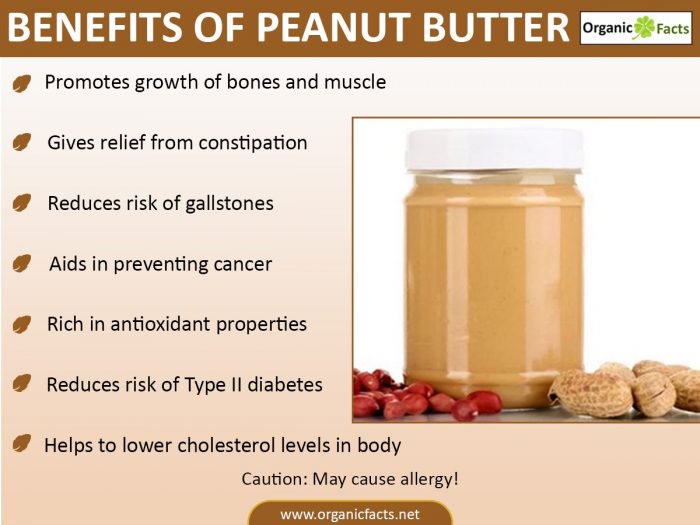 [3] Another important study, the Learning Early About Peanut Allergy (LEAP) study, was a prospective randomized trial with one group avoiding peanuts until age 5 while the other group had repeated exposure to peanuts from 4 to 6 months until age 5. The purpose of the study was to compare the incidence of peanut allergy between the two groups after 5 years. The children in this study were at high risk of developing a peanut allergy. They defined high risk as either having severe eczema or egg allergy. The results of the LEAP study showed that early introduction of peanuts to high-risk infants early could prevent the development of a peanut allergy.[4][5] Current guidelines recommend peanut introduction as early as 4 to 6 months of age in high-risk infants.
[3] Another important study, the Learning Early About Peanut Allergy (LEAP) study, was a prospective randomized trial with one group avoiding peanuts until age 5 while the other group had repeated exposure to peanuts from 4 to 6 months until age 5. The purpose of the study was to compare the incidence of peanut allergy between the two groups after 5 years. The children in this study were at high risk of developing a peanut allergy. They defined high risk as either having severe eczema or egg allergy. The results of the LEAP study showed that early introduction of peanuts to high-risk infants early could prevent the development of a peanut allergy.[4][5] Current guidelines recommend peanut introduction as early as 4 to 6 months of age in high-risk infants.
Risk factors include:
History of atopy
Family history of peanut allergy
Maternal consumption of peanuts during pregnancy
Use of certain oils to fry/roast peanuts
Epidemiology
Food allergies affect approximately 4% to 8% of children and 1% to 2% of adults. [1] Peanut allergy typically manifests initially during childhood with symptom occurrence as early as 4 months of age and usually within the first 2 years of life. Approximately 20% of children will naturally outgrow their peanut allergy and tolerate them without events later on in life.
[1] Peanut allergy typically manifests initially during childhood with symptom occurrence as early as 4 months of age and usually within the first 2 years of life. Approximately 20% of children will naturally outgrow their peanut allergy and tolerate them without events later on in life.
In general, there appears to have been an increase in peanut allergy over the past 2 decades. The first evidence of peanut allergy may come to light between ages 12-24 months and unlike egg or milk allergies, peanut allergy does not always decrease with time. Some studies indicate that the severity of reactions to peanuts also increases with age.
Pathophysiology
Food allergy classifies as a type I IgE mediated hypersensitivity reaction. Initial sensitization to peanuts stimulates the production of peanut-specific IgE antibodies. The major peanut antigens identified by the specific antibodies response include Arah2, h3, h4. In a sensitized individual, peanut ingestion can trigger specific IgE antibody cross-linking to IgE receptors on effector cells such as basophils and mast cells, which triggers mediator release such as histamine and a variety of cytokines and chemokines. Inflammatory cell recruitment ensues to propagate the allergic response.[1]
Inflammatory cell recruitment ensues to propagate the allergic response.[1]
The allergy to peanuts is due to low molecular weight proteins that are resistant to heat, proteases, and denaturants. Eleven peanut allergens have been described (Ara h 1-11).
History and Physical
Diagnosis of a peanut allergy relies on patient history and physical exam. The type/amount of food ingested, onset/duration of symptoms, and relieving factors are key in making an accurate diagnosis. A history of eczema is important as it is a significant risk factor for peanut sensitization. Common symptoms of peanut allergy include skin reactions, such as urticaria, erythema, or edema. More severe symptoms include tingling of the mouth and throat, edema of the lips, and dyspnea. These symptoms will often frequently progress to anaphylaxis.
Evaluation
Skin testing is the preferred testing method in those patients with a history compatible with food allergies. A skin-prick test is performed by applying a drop of a peanut extract to the skin, commonly on the arm or back. A wheal/flare response is measured approximately 20 minutes after pricking the skin where the drop of peanut extract was placed. Positive testing indicates sensitization to peanuts and can predict the probability of a future reaction. Measurement of peanut-specific IgE antibodies in serum is another useful method to estimate sensitization and the probability of future reaction. It is important to note that this type of testing does not predict the severity of the reaction and is limited by poor sensitivity; results are reassuring when negative. Ultimately a clinician-supervised oral food challenge is the best and most reliable method for diagnosing peanut allergy. Serum-specific IgE and skin-prick testing can aid in determining which patients should have an oral food challenge.[6][7] An oral food challenge can also assist in confirming reactivity in those patients without a clear history or never having ingested peanuts despite sensitization.
A wheal/flare response is measured approximately 20 minutes after pricking the skin where the drop of peanut extract was placed. Positive testing indicates sensitization to peanuts and can predict the probability of a future reaction. Measurement of peanut-specific IgE antibodies in serum is another useful method to estimate sensitization and the probability of future reaction. It is important to note that this type of testing does not predict the severity of the reaction and is limited by poor sensitivity; results are reassuring when negative. Ultimately a clinician-supervised oral food challenge is the best and most reliable method for diagnosing peanut allergy. Serum-specific IgE and skin-prick testing can aid in determining which patients should have an oral food challenge.[6][7] An oral food challenge can also assist in confirming reactivity in those patients without a clear history or never having ingested peanuts despite sensitization.
Treatment / Management
To date, the recommended management of peanut allergy relies on avoidance of peanut ingestion. Unfortunately, severe reactions such as anaphylaxis may occur despite best efforts in avoidance. Epinephrine is the first-line medication for the treatment of anaphylaxis. Intramuscular (IM) or intravenous (IV) epinephrine should be administered, although the IM route is preferred, with injection placement in the lateral thigh. IV administration ideally should be done in the inpatient setting with appropriate monitoring.[8] Antihistamines, corticosteroids, and bronchodilators, may also be used, but it is essential to realize these medications do not treat anaphylaxis, rather they are adjunctive therapies for anaphylaxis management. IV fluids should be provided to prevent and treat tissue hypoperfusion. In rare cases, the patient may require intubation for airway protection. Severe cases of anaphylaxis should be admitted and monitored at least overnight until stable. Biphasic anaphylaxis may occur in some cases where symptoms recur up to 8 hours after the initial reaction. The treating clinician should take this into account before discharge.[9] In less severe presentations the patient can be observed in the emergency department after standard treatment, and with sufficient improvement safely discharged home.
Unfortunately, severe reactions such as anaphylaxis may occur despite best efforts in avoidance. Epinephrine is the first-line medication for the treatment of anaphylaxis. Intramuscular (IM) or intravenous (IV) epinephrine should be administered, although the IM route is preferred, with injection placement in the lateral thigh. IV administration ideally should be done in the inpatient setting with appropriate monitoring.[8] Antihistamines, corticosteroids, and bronchodilators, may also be used, but it is essential to realize these medications do not treat anaphylaxis, rather they are adjunctive therapies for anaphylaxis management. IV fluids should be provided to prevent and treat tissue hypoperfusion. In rare cases, the patient may require intubation for airway protection. Severe cases of anaphylaxis should be admitted and monitored at least overnight until stable. Biphasic anaphylaxis may occur in some cases where symptoms recur up to 8 hours after the initial reaction. The treating clinician should take this into account before discharge.[9] In less severe presentations the patient can be observed in the emergency department after standard treatment, and with sufficient improvement safely discharged home.
Although avoidance is the mainstay of treatment, new strategies are being tested to prevent food allergies. Peanut immunotherapy clinical trials have been promising to date using incremental ingestion of small amounts of peanut over time with oral immunotherapy (OIT). The goal of OIT may be either to prevent a reaction if accidental peanut ingestion occurs or to induce tolerance where the patient can regularly ingest peanuts safely.[1][10] Epicutaneous immunotherapy is another desensitization method tested where peanut is transdermally introduced over time to build up a tolerance.
Immunization with plasmid DNA encoding food allergens is a novel method to treat peanut allergy. However, this approach requires a large amount of plasmid DNA required for vaccination.
Mutated peanut protein substitutes are another way to manage peanut allergies.
Finally, sublingual immunotherapy involves placing emulsified purified peanut protein under the tongue for 120 seconds and then swallowing. Data show that this can help prevent peanut allergic reactions with time.
Differential Diagnosis
Acute urticaria
Food intolerance (e.g., lactose intolerance)
Toxic reaction (e.g., scombroid poisoning)
Oral allergy syndrome
Eosinophilic esophagitis
Prognosis
Approximately 20% of patients with a peanut allergy will naturally acquire tolerance to peanuts over time. Unfortunately, peanut allergy is usually lifelong and remains potentially fatal.
Complications
Symptoms can occur within seconds of ingestion, with peak occurrence by 30 minutes but can delay up to 2 hours. Major target organs of an allergic reaction include the skin, gastrointestinal (GI), and respiratory tracts. Skin-related symptoms include urticaria, angioedema, and occasional worsening of existing eczema. GI symptoms include abdominal pain, vomiting, and/or diarrhea. Respiratory symptoms can manifest as repetitive coughing, stridor, and wheezing. Also, it can affect the cardiac and the central nervous systems in the setting of anaphylactic shock whereby diminished tissue perfusion leads to cardiac arrest and syncope.[10] Symptom presentation must be interpreted in the context of the patient’s history, i.e., symptoms are relevant to a food allergy when ingestion occurs in the appropriate time frame expected for food-induced allergic reactions.
Deterrence and Patient Education
Patients and parents should be educated on the importance of avoiding peanuts and all peanut-containing products. All caregivers and teachers should be made aware of the allergy as well. It is vital that these patients carry injectable epinephrine with them everywhere they go.
Enhancing Healthcare Team Outcomes
Managing a peanut allergy usually involves an interprofessional team. The majority of patients are first seen by the primary care clinician. While avoidance is the primary means of preventing a food allergy reaction, strict avoidance can place a significant burden on patient quality of life and provoke anxiety in patients and family members.[11][12] Besides avoiding peanuts, nurses should educate patients to be careful not to consume cross-contaminated foods how to interpret food labels to identify sources of food allergens. A self-injectable epinephrine prescription is necessary for patients with peanut allergies. They should receive education on how to recognize the signs and symptoms of food hypersensitivity and how to administer epinephrine. Today there are novel ways to decrease peanut allergy with various types of immunotherapeutic methods. The oral immunotherapy technique has been shown to have the most promise. However, until a definitive method of preventing peanut allergy is available, the key is for all clinicians to encourage allergic patients to carry injectable epinephrine and avoid peanuts.
References
- 1.
- Al-Muhsen S, Clarke AE, Kagan RS. Peanut allergy: an overview. CMAJ. 2003 May 13;168(10):1279-85. [PMC free article: PMC154188] [PubMed: 12743075]
- 2.
- Sicherer SH, Sampson HA. Peanut and tree nut allergy. Curr Opin Pediatr. 2000 Dec;12(6):567-73. [PubMed: 11106277]
- 3.
- Finkelman FD. Peanut allergy and anaphylaxis. Curr Opin Immunol. 2010 Dec;22(6):783-8. [PMC free article: PMC3005304] [PubMed: 21051210]
- 4.
- Stiefel G, Anagnostou K, Boyle RJ, Brathwaite N, Ewan P, Fox AT, Huber P, Luyt D, Till SJ, Venter C, Clark AT. BSACI guideline for the diagnosis and management of peanut and tree nut allergy. Clin Exp Allergy. 2017 Jun;47(6):719-739. [PubMed: 28836701]
- 5.
- Du Toit G, Roberts G, Sayre PH, Bahnson HT, Radulovic S, Santos AF, Brough HA, Phippard D, Basting M, Feeney M, Turcanu V, Sever ML, Gomez Lorenzo M, Plaut M, Lack G., LEAP Study Team. Randomized trial of peanut consumption in infants at risk for peanut allergy. N Engl J Med. 2015 Feb 26;372(9):803-13. [PMC free article: PMC4416404] [PubMed: 25705822]
- 6.
- Rabjohn P, Helm EM, Stanley JS, West CM, Sampson HA, Burks AW, Bannon GA. Molecular cloning and epitope analysis of the peanut allergen Ara h 3. J Clin Invest. 1999 Feb;103(4):535-42. [PMC free article: PMC408104] [PubMed: 10021462]
- 7.
- Stanley JS, King N, Burks AW, Huang SK, Sampson H, Cockrell G, Helm RM, West CM, Bannon GA. Identification and mutational analysis of the immunodominant IgE binding epitopes of the major peanut allergen Ara h 2. Arch Biochem Biophys. 1997 Jun 15;342(2):244-53. [PubMed: 9186485]
- 8.
- Sicherer SH, Forman JA, Noone SA. Use assessment of self-administered epinephrine among food-allergic children and pediatricians. Pediatrics. 2000 Feb;105(2):359-62. [PubMed: 10654956]
- 9.
- Boyce JA, Assa’ad A, Burks AW, Jones SM, Sampson HA, Wood RA, Plaut M, Cooper SF, Fenton MJ, Arshad SH, Bahna SL, Beck LA, Byrd-Bredbenner C, Camargo CA, Eichenfield L, Furuta GT, Hanifin JM, Jones C, Kraft M, Levy BD, Lieberman P, Luccioli S, McCall KM, Schneider LC, Simon RA, Simons FE, Teach SJ, Yawn BP, Schwaninger JM., NIAID-Sponsored Expert Panel. Guidelines for the Diagnosis and Management of Food Allergy in the United States: Summary of the NIAID-Sponsored Expert Panel Report. J Allergy Clin Immunol. 2010 Dec;126(6):1105-18. [PMC free article: PMC4241958] [PubMed: 21134568]
- 10.
- Bublin M, Breiteneder H. Developing therapies for peanut allergy. Int Arch Allergy Immunol. 2014;165(3):179-94. [PMC free article: PMC5548240] [PubMed: 25531161]
- 11.
- Sicherer SH, Noone SA, Muñoz-Furlong A. The impact of childhood food allergy on quality of life. Ann Allergy Asthma Immunol. 2001 Dec;87(6):461-4. [PubMed: 11770692]
- 12.
- Primeau MN, Kagan R, Joseph L, Lim H, Dufresne C, Duffy C, Prhcal D, Clarke A. The psychological burden of peanut allergy as perceived by adults with peanut allergy and the parents of peanut-allergic children. Clin Exp Allergy. 2000 Aug;30(8):1135-43. [PubMed: 10931121]
Peanut Allergy: An Overview | Allergy, Asthma & Clinical Immunology
Bock SA: Prospective appraisal of complaints of adverse reactions to foods in children during the first 3 years of life. Pediatrics. 1987, 79: 683-8.
CAS
PubMed
Google Scholar
Jansen JJ, Kardinaal AF, Huijbers G: Prevalence of food allergy and intolerance in the adult Dutch population. J Allergy Clin lmmunol. 1994, 93: 446-56. 10.1016/0091-6749(94)90353-0.
CAS
Article
Google Scholar
Young E, Stoneham MD, Petruckevitch A: A population study of food intolerance. Lancet. 1994, 343: 1127-30. 10.1016/S0140-6736(94)90234-8.
CAS
Article
PubMed
Google Scholar
Hefle SL, Nordlee JA, Taylor SL: Allergenic foods. Crit Rev Food Sci Nutr. 1996, 36: S69-89. 10.1080/10408399609527760.
CAS
Article
PubMed
Google Scholar
Sicherer SH, Sampson HA: Peanut and tree nut allergy. Curr Opin Pediatr. 2000, 12: 567-73. 10.1097/00008480-200012000-00010.
CAS
Article
PubMed
Google Scholar
Hourihane JO: Peanut allergy-current status and future challenges. Clin Exp Allergy. 1997, 27: 1240-5. 10.1111/j.1365-2222.1997.tb01167.x.
CAS
Article
PubMed
Google Scholar
Sheikh A, Alves B: Hospital admissions for acute anaphylaxis: time trend study. BMJ. 2000, 320: 1441-10.1136/bmj.320.7247.1441.
PubMed Central
CAS
Article
PubMed
Google Scholar
Sicherer SH, Munoz-Furlong A, Sampsom HA: Prevalence of peanut and tree nut allergy in the United States determined by means of a random digit dial telephone survey: a 5-year follow-up study. J Allergy Clin Immunol. 2003, 112: 1203-10.1016/S0091-6749(03)02026-8.
Article
PubMed
Google Scholar
Sicherer SH, Munoz-Furlong A, Burks AW, Sampson HA: Prevalence of peanut and tree nut allergy in the US determined by a random digit dial telephone survey. J Allergy Clin Immunol. 1999, 103: 559-62. 10.1016/S0091-6749(99)70224-1.
CAS
Article
PubMed
Google Scholar
Grundy J, Matthews S, Bateman B: Rising prevalence of allergy to peanut in children: data from 2 sequential cohorts. J Allergy Clin Immunol. 2002, 110: 784-9. 10.1067/mai.2002.128802.
Article
PubMed
Google Scholar
Kagan RS, Joseph L, Dufresne C: Prevalence of peanut allergy in primary-school children in Montreal, Canada. J Allergy Clin Immunol. 2003, 112: 1223-8. 10.1016/j.jaci.2003.09.026.
Article
PubMed
Google Scholar
Sampson HA: Peanut allergy. N Engl J Med. 2002, 346: 1294-9. 10.1056/NEJMcp012667.
Article
PubMed
Google Scholar
Sicherer SH, Burks AW, Sampson HA: Clinical features of acute allergic reactions to peanut and tree nuts in children. Pediatrics. 1998, 2: 364-
Google Scholar
Leek Vander TK, Liu AH, Stefanski K: The natural history of peanut allergy in young children and its association with serum peanut-specific IgE. J Pediatr. 2000, 137: 749-55. 10.1067/mpd.2000.109376.
Article
Google Scholar
Sampson HA, Ho DG: Relationship between food-specific IgE concentrations and the risk of positive food challenges in children and adolescents. J Allergy Clin Immunol. 1997, 100: 444-51. 10.1016/S0091-6749(97)70133-7.
CAS
Article
PubMed
Google Scholar
Bock SA, Buckley J, Holst A, May CD: Proper use of skin tests with food extracts in diagnosis of hypersensitivity to food in children. Clin Allergy. 1977, 7: 375-83. 10.1111/j.1365-2222.1977.tb01466.x.
CAS
Article
PubMed
Google Scholar
Sampson HA, Albergo R: Comparison of results of skin tests, RAST, and double blinded placebo-controlled food challenges in children with atopic dermatitis. J Allergy Clin Immunol. 1984, 74: 26-10.1016/0091-6749(84)90083-6.
CAS
Article
PubMed
Google Scholar
Roberts G, Lack G: Diagnosing peanut allergy with skin prick and specific IgE testing. J Allergy Clin Immunol. 2005, 115: 1291-6. 10.1016/j.jaci.2005.02.038.
CAS
Article
PubMed
Google Scholar
Lin RY, Schwartz LB, Curry A: Histamine and tryptase levels in patients with acute allergic reactions: an emergency department-based study. J Allergy Clin Immunol. 2000, 106: 65-71. 10.1067/mai.2000.107600.
CAS
Article
PubMed
Google Scholar
Burks W, Sampson HA, Bannon GA: Peanut allergens. Allergy. 1998, 53: 725-30. 10.1111/j.1398-9995.1998.tb03967.x.
CAS
Article
PubMed
Google Scholar
Barnett D, Bonham B, Howden ME: Allergenic cross-reactions among legume foods–an in vitro study. J Allergy Clin Immunol. 1987, 79: 433-8. 10.1016/0091-6749(87)90359-9.
CAS
Article
PubMed
Google Scholar
Bock SA, Atkins FM: The natural history of peanut allergy. J Allergy Clin Immunol. 1989, 83: 900-4. 10.1016/0091-6749(89)90103-6.
CAS
Article
PubMed
Google Scholar
Teuber SS, Beyer K: Peanut, tree nut and seed allergies. Curr Opin Allergy Clin Immunol. 2004, 4: 201-3. 10.1097/00130832-200406000-00011.
Article
PubMed
Google Scholar
Vandenbulke L, Bachert C, van Cauwenberg P, Claeys S: The innate immune system and its role in allergic disorders. Int Arch Allergy Immunol. 2005, 139: 159-65. 10.1159/000090393.
Article
Google Scholar
Vadas P, Wai Y, Burks W, Perelman B: Detection of peanut allergens in breast milk of lactating women. JAMA. 2001, 285: 1746-8. 10.1001/jama.285.13.1746.
CAS
Article
PubMed
Google Scholar
Maleki SJ, Viquez O, Jacks T: The major peanut allergen, Ara h 2 functions as a trypsin inhibitor and roasting enhances this function. J Allergy Clin Immunol. 2003, 112: 175-9. 10.1067/mai.2003.1551.
Article
Google Scholar
Lack G, Fox D, Northstone K, Golding J: N Engl J Med. 2003, 348: 977-85. 10.1056/NEJMoa013536.
Article
PubMed
Google Scholar
Adopted from consumer fact sheet about peanuts, a product of The Canadian Food Inspection Agency.
Skolnick HS, Conover-Walker MK, Koerner CB: The natural history of peanut allergy. J Allergy Clin Immunol. 2001, 107: 367-74. 10.1067/mai.2001.112129.
CAS
Article
PubMed
Google Scholar
Fleischer DM, Conover-Walker MK, Christie L: The natural progression of peanut allergy: resolution and the possibility of recurrence. J Allergy Clin Immunol. 2003, 112: 183-9. 10.1067/mai.2003.1517.
Article
PubMed
Google Scholar
Kerr P: Peanut resensitization after negative skin tests and negative oral challenge. J Allergy Clin Immunol. 2004, 113: S151-10.1016/j.jaci.2003.12.548.
Article
Google Scholar
Sampson HA, Mendelson L, Rosen JP: Fatal and near-fatal anaphylactic reactions to food in children and adolescents. N Engl J Med. 1992, 327: 380-4. 10.1056/NEJM199208063270603.
CAS
Article
PubMed
Google Scholar
Lieberman P: Biphasic anaphylactic reactions. Ann Allergy Asthma Immunol. 2005, 95: 217-26. 10.1016/S1081-1206(10)61217-3.
Article
PubMed
Google Scholar
Bock SA, Munoz-Furlong A, Sampson HA: Fatalities due to anaphylactic reactions to foods. J Allergy Clin Immunol. 2001, 107: 191-3. 10.1067/mai.2001.112031.
CAS
Article
PubMed
Google Scholar
Kinet JP: The high-affinity IgE receptor (Fc epsilon RI): from physiology to pathology. Annu Rev Immunol. 1999, 17: 931-72. 10.1146/annurev.immunol.17.1.931.
CAS
Article
PubMed
Google Scholar
Leung DY, Sampson HA, Yunginger JW: Effect of anti-IgE therapy in patients with peanut allergy. N Engl J Med. 2003, 348: 986-93. 10.1056/NEJMoa022613.
CAS
Article
PubMed
Google Scholar
Oppenheimer JJ, Nelson HS, Bock SA: Treatment of peanut allergy with rush immunotherapy. J Allergy Clin Immunol. 1992, 90: 256-62. 10.1016/0091-6749(92)90080-L.
CAS
Article
PubMed
Google Scholar
Pons L, Palmer K, Burks W: Towards immunotherapy for peanut allergy. Curr Opin Allergy Clin Immunol. 2005, 5: 58-62.
Google Scholar
Li XM, Zhang TF, Huang CK: Food Allergy Herbal Formula-1 (FAHF-1) blocks peanut-induced anaphylaxis in a murine model. J Allergy Clin Immunol. 2001, 108: 639-46. 10.1067/mai.2001.118787.
CAS
Article
PubMed
Google Scholar
Srivastava KD, Kattan JD, Zou ZM: The Chinese herbal medicine formula FAHF-2 completely blocks anaphylactic reactions in a murine model of peanut allergy. J Allergy Clin Immunol. 2005, 115: 171-8. 10.1016/j.jaci.2004.10.003.
Article
PubMed
Google Scholar
Kalliomaki M, Salminen S, Poussa T: Probiotics and prevention of atopic disease: 4-year follow-up of a randomised placebo-controlled trial. Lancet. 2003, 361: 1869-71. 10.1016/S0140-6736(03)13490-3.
Article
PubMed
Google Scholar
Yeung VP, Gieni RS, Umetsu DT, DeKruyff RH: Heat-killed Listeria monocytogenes as an adjuvant converts established murine Th3-dominated immune responses into Th2-dominated responses. J Immunol. 1998, 161: 4146-52.
CAS
PubMed
Google Scholar
Frick OL, Teuber SS, Buchanan BB: Allergen immunotherapy with heat-killed Listeria monocytogenes alleviates peanut and food-induced anaphylaxis in dogs. Allergy. 2005, 60: 243-50. 10.1111/j.1398-9995.2004.00711.x.
CAS
Article
PubMed
Google Scholar
Flinterman AE, Knol EF, van Ieperen-van Dijk AG: Probiotics have a different immunomodulatory potential in vitro versus ex vivo upon oral administration in children with food allergy. Int Arch Allergy Immunol. 2007, 143: 237-44. 10.1159/000099467.
CAS
Article
PubMed
Google Scholar
Peanut – Food Allergy Canada
Quick facts
- Peanut allergy is one of the most common food allergies, and it is considered a priority food allergen by Health Canada. Priority food allergens are the foods that cause the majority of allergic reactions.
- Peanuts are a member of the legume family, and not related to tree nuts. A person can be allergic to peanuts and not be allergic to tree nuts, or they can be allergic to both.
- Lupin (or lupine) is an ingredient that is increasingly being used in foods, especially gluten-free products. It is a legume belonging to the same plant family as peanuts, and some people are allergic to both. It is recommended for anyone with a peanut allergy to avoid products containing lupin until they have consulted with their allergist.
- It was once considered that all peanut allergies were lifelong. However, some studies have shown that some children may outgrow their peanut allergy. If your child has peanut allergy, consult with your allergist before reintroducing peanut products.
- Many international cuisines use peanuts in food, including, Indonesian (e.g., satays), Thai (e.g., curries), Vietnamese (e.g. crushed peanut as a topping, spring rolls), Indian (e.g., certain curries), and Chinese (e.g. egg rolls, certain sauces).
Allergic reactions to peanut
If you have an allergy to peanut, keep an epinephrine auto-injector (e.g., EpiPen®, ALLERJECT®) with you at all times. Epinephrine is the first-line treatment for severe allergic reactions (anaphylaxis).
__aware
Be allergy-aware: How to avoid peanut
- Read ingredient labels every time you buy or eat a product. If the label indicates that a product “Contains” or “may contain” peanut, do not eat it. If you do not recognize an ingredient, if there is no ingredient list available, or if you don’t understand the language written on the packaging, avoid the product.
- Do the Triple Check and read the label:
- Once at the store before buying it.
- Once when you get home and put it away.
- Again before you serve or eat the product.
- Always carry your epinephrine auto-injector. It’s recommend that if you do not have your auto-injector with you, that you do not eat.
- Check with manufacturers directly if you are not sure if a product is safe for you.
- Be careful when buying products from abroad since labelling rules differ from country to country.
- Watch for cross-contamination, which is when a small amount of a food allergen (e.g., peanut) gets into another food accidentally, or when it’s present in saliva, on a surface, or on an object. This small amount of an allergen could cause an allergic reaction.
__types
Other names for peanuts
- Arachide
- Arachis oil
- Beer nuts
- Cacahouète/cacahouette/cachuète
- Goober nuts, goober peas
- Ground nuts
- Kernels
- Mandelonas, Nu-Nuts (a nut-flavoured peanut confection)
- Nut meats
- Valencias
__sources
Possible sources of peanuts
- Almond & hazelnut paste, icing, glazes, marzipan, nougat
- Asian cuisine such as curries, egg rolls, pad thai, satay, Szechuan and other sauces, gravy, soups
- Baked goods like cakes, cookies, donuts, energy bars, granola bars, pastries
- Candies, such as mandelonas, chocolates, and chocolate bars
- Cereals and granola, granola bars
- Chili
- Chipotle sauce and other Mexican/Latin sauces
- Ice cream and flavoured ice water treats, frozen desserts, frozen yogurts, sundae toppings
- Dried salad dressings and soup mixes
- Hydrolyzed plant protein/ hydrolyzed vegetable protein
- Faux nuts made from re-formed peanut products (Nu-NutsTM)
- Peanut oil
- Snack foods such as dried fruits, chewy fruit snacks, trail mixes, popcorn, pretzels, chips
- Vegetarian meat substitutes
- Edible fruit arrangements
__non_sources
Non-food sources of peanuts
- Ant bait, bird feed, mouse traps
- Cosmetics, hair and skin care products, soap, sunscreen
- Craft materials
- Medications, vitamins, and health supplements
- Mushroom growing media
- Pet foods and pet toys
- Sunscreen and other creams
- Stuffing in children’s toys
Note: These lists are not complete and may change.
__report
Report a reaction
If you believe you may have reacted to an allergen not listed on the packaging, you can report it to the Canadian Food Inspection Agency, which may issue a product recall. Find out more on our Food Labelling page.
90,000 12 facts about allergies that will surprise you
The pollen of flowering plants that cause allergies can travel hundreds of kilometers around 1 , rising to a height of up to two kilometers. So think twice before skipping your antihistamines on the beach, thinking that if there is only white sand and rare palm trees all around, then you are in luck.
Psychological stress can exacerbate a variety of diseases 2 , and allergic asthma is no exception.Excitement makes our breathing more choppy and faster, which can trigger an asthmatic reaction. But, surprisingly, a similar reaction is caused by unrestrained laughter, from which you can cough. So – choose the middle ground.
Allergy with humans for many thousands of years. For example, the first cases of allergic asthma were described in his writings by Hippocrates 3 , around 540 BC.
The eternal confrontation between cats and dogs, in case of allergies, is completely behind the tailed purrs.Cases of allergies to cats are twice as common as 4 than to human barking friends.
If you are allergic to birch pollen, then you should avoid raw tomatoes. Scientists from Munich conducted experiments with tomatoes 5 , and found that they contain the most similar type of allergen, as in the case of birches. But there is good news – sun-dried tomatoes, as well as those tomatoes that we put in soup or simmer in the oven, lose properties that are deplorable for allergy sufferers.
The first allergen to pets was identified only about 30 years ago, despite the fact that humans interact with animals (sometimes sneezing and scratching) for tens of thousands of years. A cat allergen named “Fel d 1” (abbreviated from lat. Felis domesticus) was identified in 1991 6 . Moreover, all felines, with long or short hair, lions or tigers, all produce this particular allergen. So – don’t pet a tiger at the zoo.
It is not entirely true to believe that allergies occur most often in childhood, since everything depends on the type of allergic reaction and the specific disease. According to world studies 7 , more than half of the recorded cases of food allergies over the past 20 years have occurred in people who have reached middle age.
For many years, pollen allergy was called differently – “pink fever” 8 .This was due to the fact that doctors were convinced that such allergies can occur only in representatives of the wealthy class, who often smell roses.
Allergies are interrelated 9 . For example, if you are allergic to pollen, a similar allergen can enter your body through foods such as apricots, cherries, nectarines, and carrots. But with a confirmed grass allergy, you should avoid melons, oranges, watermelons, potatoes and peanuts.However, if all these delicacies are cooked on a fire – baked, boiled, made jam or preserves, then the allergen will not harm.
Dust mites that live in apartments and can cause various allergic reactions, not insects, but arachnids 10 . That is, the closest relatives of beetles, spiders, as well as shrimp and lobsters.
90% A total of 8 food types are responsible 11 for 90 percent of allergic reactions.These rascals are: eggs, milk, peanuts, nuts, shrimps, soybeans, millet and fish. Be extremely careful with them.
According to WHO research 11 , the number of those with allergy-related asthma is approaching 235 million. So allergies are very, very serious.
Pleasant with useful – Style – Kommersant
In the modern world, eating healthy products does not always mean “getting benefit from them”.Kommersant Style understands the nuances of proper nutrition.
Allergy has long been dubbed the disease of the 21st century, and in addition to our usual allergy to pollen and flowering, almost every one of us knows what it means to have a reaction to one or another food. It is known that more than 40% of children suffer from it. Does it make sense for adults to think about this problem? Our questions were answered by Alisa Shabanova, specialist in food problems, the ideologist-developer of GrinDin.
– What are food allergens and where are they found?
– Allergen is an antigen that causes an allergic reaction.Most often, proteins or polysaccharides act as an antigen, but these can also be simple substances, for example, metals. An allergic reaction is a hypersensitivity to certain antigens mediated by class E immunoglobulins (IgE). They provide the first stage in the development of the reaction, which turns into a general inflammatory process with various symptoms: from sneezing and itching to deadly anaphylactic shock.
An important factor is the prevalence and isolation of the allergen.For example, if you are allergic to celery, the risk of eating it and not being noticed is very low. Only if you order a complex dish at a restaurant. And vice versa, if an allergen is a widespread product that comes into contact with a large number of production facilities, then even traces of it, trace amounts can cause allergies even if the product itself is formally absent in food. For example, gluten free. Wheat is processed at the same capacity as oats and some other cereals. Therefore, oatmeal can lead to an allergic reaction in a person with celiac disease.Another dangerous and common allergen is nuts. Almost all products related to the processing of dried fruits and seeds say that “the product may contain trace amounts of nuts.” In this case, the choice of products, especially those made industrially, is greatly narrowed.
– Is there a chance that an allergy will happen to you as an adult, even if you were not allergic as a child?
– Yes. Allergic reactions can increase with the consumption of the product.For example, celiac disease is often found not in childhood, but already at a conscious age, and sometimes even after 40 years. Furthermore, a genetic predisposition to allergies can be complicated by the general chemical load on the organism. We use too many chemical products: additives, dyes, additives. They “irritate” our body, raising the overall allergic background. Superhygiene also plays an important role. In third world countries allergies are less common, as the immune system is constantly exposed to pathogenic organisms.In developed countries, the use of household chemicals and antibacterial agents weakens the immune system, making it more sensitive.
– Is it possible to get rid of food allergies when you move to another area?
– No. Allergy is combined – a reaction to the pollen of dandelion, for example, it is often associated with an allergy to chamomile, sometimes – with an allergy to celery and carrots. If you move out of the region where the dandelions bloom, in a place where they do not exist, the overall decrease allergic background and have a chance of an allergic reaction to chamomile can relax.But this is individual. Doctors recommend lifelong avoidance of known allergens.
– What is the safest food?
– Any food contains antigens that can potentially cause an allergic reaction. Therefore, there are no products that, in principle, cannot give allergies. However, there are more and less common food allergens. Frequent ones include: milk protein, egg white, nuts, shellfish, cocoa, stone fruits (peach, plum), nightshade (potatoes, tomatoes), citrus fruits.Meat, chicken, fish can also cause allergies, but such cases are less common. Despite popular belief, among Russians, gluten allergy – celiac disease – is quite rare. Basically, gluten-containing foods are excluded in order to remove flour from the diet – in this case, the process of weight loss is accelerated.
– How can you protect yourself and prevent allergies?
– If you are allergic to any antigens, you just have to stop using them.If possible, you need to reduce the general irritating background: eat fewer foods with additives, dyes, preservatives, quit smoking.
Interviewed by Irina Kirienko
90,000 Doctors named the main product that provokes allergies in children
Omsk doctors announced a list of products that most often provoke an allergic reaction in children.
– In the first place among the products that cause an allergic reaction is the protein of cow’s milk, – says the allergist-immunologist, assistant of the Department of Internal Medicine and Family Medicine of Omsk State Medical University Elena Nadey.- 75-80 percent of food allergies in children are caused by them.
According to doctors, most often a reaction to cow protein is observed in babies of the first year of life.
– First of all, this is due to the incorrect early introduction of complementary foods, – says Oleg Antonov, a pediatrician-gastroenterologist, head of the Department of Pediatrics at Omsk State Medical University. – Many mothers supplement their children with cow’s milk, believing that this is a natural and healthy product. But it is not suitable for feeding babies. The child begins to have pronounced skin and intestinal manifestations.As a result, specialists have been treating intestinal dysbiosis for a long time and diagnose functional disorders. But one has only to adjust the diet and remove cow’s milk from the diet, as allergic manifestations are significantly reduced and come to naught.
Allergies in children are also commonly caused by strawberries, strawberries, victoria, peanuts and sugar.
– We do not recommend sweets for children with food allergies. They are excluded from the diet in the first place, – says Oleg Antonov. – Natural chocolate rarely causes allergies.However, an allergic reaction can occur to other components contained in the treat – sugar, stabilizers, nuts.
Physicians also advise to be careful when consuming soy, citrus fruits, seafood and crustaceans. And if the parents have a tendency to allergies, then during pregnancy the expectant mother should adhere to a special diet.
At the first sign of a food allergy, seek medical attention as soon as possible. The most dangerous manifestation of the disease is anaphylactic shock.Its most prominent symptoms are laryngeal edema and difficulty breathing.
The doctor spoke about the causes of allergic reactions to sweets – Rossiyskaya Gazeta
Many people believe that sweets can cause allergies. At the same time, sugar, or, more precisely, its main element – sucrose, which is present in sweet foods, is not an allergen. So why, for example, does an allergic reaction occur after eating a chocolate bar? Allergologist-immunologist, candidate of medical sciences Anatoly Bala explained that the reason for this is in the individual components of the sweetness, and not in sugar.
As a specialist kp.ru told, it is necessary to distinguish true allergies from pseudo-allergic reactions, in which redness, peeling of the skin, burning, sneezing, runny nose and so on, up to a rise in temperature, can also occur. But this is not an allergy. The difference between them is the absence of an immunological component: the reaction occurs, but there are no antibodies – specific immunoglobulins of class E (IgE) to any component of the product.
The question is which component and in what quantity is contained in the dessert.If it contains a true allergen, for example, peanuts, nuts, soybeans, the body’s reaction can be strong – up to anaphylactic shock. If there are no true allergens in the sweet product, treatment is not required. But when unpleasant symptoms appear, it is better to consult an allergist, who, with the help of tests, should determine their nature – whether it is pseudo-allergy or not.
– Sweet is a carbohydrate, not a protein, so it does not cause a true allergy. You just need to determine the dose of such a product that is safe for humans.If we are talking about food allergies, an elimination diet is prescribed, says Anatoly Bala.
This diet eliminates foods that react or cross-allergic reactions. Also, if you have symptoms that require treatment, a specialist may prescribe medications. For severe symptoms, these will be antihistamines or hormones to relieve severe itching, irritation, or swelling.
In case of anaphylactic shock, before the arrival of an ambulance, you can use a pen with adrenaline to exclude a threat to human life.An easy way to prevent these conditions is to control the amount of food you eat. When buying a dessert, you need to find out what is in its composition. You also need to diversify the sweet menu.
According to the doctor, in a few doses you can eat a couple of sweets, a piece of chocolate, two or three waffles and marshmallows. It is advisable to choose products with a minimum content of allergens and histaminoliberators, for example, marshmallow, marshmallow, marmalade.
It is also necessary to take into account your age, since in a person over the years the level of an enzyme that breaks down histamine gradually decreases: what was safe in youth can cause a rash in old age.
7 facts about peanut allergy – Rambler / female
Peanut allergy is an immune reaction to the consumption of any food with peanuts in the composition. Unlike other nuts, peanuts do not grow on a tree, but underground, allergies to it are quite common, it can be strong or weak. A violent reaction to eating peanuts can lead to anaphylactic shock, swelling of the tongue and tissues of the respiratory tract, suffocation and even death. People with a strong peanut reaction need to carry an adrenaline syringe with them for prompt treatment.These facts need to be known not only to allergy sufferers, but also to those around them.
Peanuts can be present everywhere
Before buying any product, it is important to carefully study its composition, even if you buy this product at regular intervals. The composition of products changes periodically, peanuts can be found in any product.
Block similar articles
Peanut allergy is inherited
If your parents are allergic to peanuts, then you will most likely have it.If a sibling has a reaction to peanuts, the likelihood becomes even higher.
Not only peanuts are dangerous
Peanuts are different from other nuts, but if a person is allergic to peanuts, then other nuts can also be dangerous. In production, other types of nuts may come into contact with traces of peanuts. Hence, people with peanut allergies need to stay away from other nuts.
If a reaction is found, see a doctor.
Peanut allergy may go undiagnosed for decades with mild symptoms.If you find any worrying symptoms after eating peanuts, you should see your doctor. People with severe peanut allergies should see a doctor after any exposure to the allergen.
A reaction may occur after an allergic person holds the product with peanuts in his hands and then rubs his eyes.
Peanut allergy is not always lifelong
Observations show that almost 20% of children with peanut allergies get rid of it in adulthood. It is strictly forbidden to conduct independent experiments, you should periodically undergo safe testing.
Need to know information about other products
Certain foods present an increased hazard, even if they do not contain peanuts. For example, sunflower seeds are often processed on the same equipment as peanuts, so sunflower oil may contain traces of peanuts. This applies to any vegetable oils.
Caution for new products
If you doubt whether peanuts are present in a particular product, then you do not need to try it and wait for a reaction.Contact the manufacturer and get full information about the composition of the product. Peanuts are included in the list of dangerous allergens, so manufacturers cannot hide the fact of their presence in products.
Other related materials:
10 foods for colds
7 reasons to take fish oil
5 foods that cause bloating
Infant formula reduces the risk of milk allergy
Children who have consumed formula from cow’s milk since infancy suffered less from milk protein intolerance as they got older.This is the conclusion reached by a team of scientists from Australia, who published a study in the Journal of Allergy and Clinical Immunology. Milknews looked at it and highlighted the basic facts.
The work was carried out by employees of the Murdoch Children’s Research Institute and the University of Melbourne. They noted that cow’s milk protein is one of the first proteins that a person does not receive from breast milk. It is mostly consumed by babies with breast milk substitutes.
The study was conducted as part of the HealthNuts experiment in which more than 5,000 one-year-olds participated.The sample was divided into two groups of 2,715 people: in the first, children were tested for allergies to peanuts, sesame seeds and egg white, and in the second – for allergies to milk. The experiment took place from 2007 to 2011, but the data on milk was analyzed only by 2018.
According to the statements of parents, 42% of children consumed BMS in the first three months of life, and only 13% of BMS were not combined with breast milk. During the study, experts asked parents if their children had signs of breast milk allergy and tested their words with a skin prick test.It was found that, regardless of the age of the complementary foods, introducing cow’s milk proteins into the diet reduces the risk of allergy to pure milk. The researchers added that the partially hydrolyzed formulas, which are designed to reduce the risk of allergies, did not show significant benefits over the standard formula.
Interestingly, research on milk protein had the potential to fail. The ethics committee responsible for running HealthNuts feared milk allergies would deter parents from participating in the experiment.Because of this, in the first two years of the experiment, the second sample was tested for shellfish allergy. However, studies provided to the panel showed that milk allergy symptoms are very rare at an early age, and the program was revised in 2009.
The study authors note that similar results were observed in other food categories. Previous studies have shown that parents who fed peanuts to babies between 4 and 11 months reduced their risk of nut allergy.The early introduction of eggs into the diet showed a similar result. The researchers note that the findings have allowed the authors of infant nutrition guidelines to update their recommendations for preventing food allergies.
Author: Yuri Litvinenko
Tags: food
2572 views
Refresh 90,000 Interesting Facts About Allergies – KnowHow
Allergic reactions are a response of the hypersensitive immune system to various pathogens – allergens.Today, allergy is sometimes called the plague of our time, since the body of a modern person perceives more and more relatively safe substances as a threat, and the protective reaction of the immune system is often accompanied by unpleasant symptoms: from an elementary cough to fatal anaphylactic shock. In our article we will tell you about the most interesting facts related to allergies.
The results of an interesting study were recently published: about 19% of people who consider themselves allergic, in fact, are not.As part of the study, scientists tested and interviewed 40,000 adults. At least 1 in 10 of those surveyed claimed to be allergic to one or even more foods. Most of the study participants did not go to doctors to establish an accurate diagnosis and independently excluded from the diet foods that, in their opinion, provoked an allergic reaction.
It turned out that in fact many people who consider themselves allergic have various food intolerances.As a rule, intolerance to any food is manifested in the inability to digest and assimilate certain substances. Unlike allergic reactions, this condition is not fatal, although it is almost impossible to treat.
Another unexpected result of this study was the fact that about 48% of people who are really allergic have acquired sensitivity to various pathogens already at a conscious age as a result of the constant action of the allergen on the immune system.
The myth of hypoallergenic cats
The information that shorthaired and hairless cats are safe for allergy sufferers is just a myth. This myth is based on the misconception that an animal’s fur provokes an allergic reaction. In reality, cats can only become hypoallergenic if breeders can change the composition of cat saliva. Cats are the only animals whose saliva contains the protein Fel d 1 (uteroglobulin). It is this substance that provokes an allergic reaction in most people.The connection of allergy with wool is a result of the fact that, when grooming, the animal leaves the protein Fel d 1 on the wool. The fluffier the animal, the more the allergen remains on its wool.
Mites and Meat Allergy
The mite Amblyomma americanum is widespread on the east coast of the United States. In addition to the fact that these ticks are carriers of many diseases that are dangerous to humans, the bite of one of them can also provoke the development of an allergy to meat. A key ingredient in this type of allergy is the sugar Alpha-gal, which is found in red meat.This sugar can enter the stomach of a tick when it drinks the blood of an animal. During a bite with a tick’s saliva, Alpha-gal also enters the human body, but the immune system perceives it as an irritant and synthesizes antibodies to destroy it.
This sugar is part of red meat, so people who have been bitten by a tick before develop a strong allergic reaction 4-6 hours after eating meat. In terms of the severity of symptoms, alpha-gal sugar allergy is comparable to peanut allergy, which is not only the most common, but also one of the most dangerous allergens.
Sports allergy
As ironic as it may sound, about two percent of the world’s population actually suffer from sports allergies. For some reason, physical activity provokes an immune response, as a result of which a person develops allergy symptoms: hives, pain in the eyes and sneezing, and in more severe cases, anaphylactic shock occurs. Officially, this condition is called “sports anaphylaxis”, which can manifest itself regardless of the intensity of physical activity.
Not only active sports, but even calm walking can provoke a reaction. An interesting fact: of all sports and physical activities, only swimming did not cause such a reaction. Scientists are still racking their brains over the likely cause of sports anaphylaxis. Today, it is generally accepted that this allergy is associated with food or household allergens, which provoke an immune response only in the presence of physical activity.
Treatment of allergy with parasites
In 1970, parasitologist Jonathan Turton decided to conduct an experiment on himself to treat allergies with the help of parasitic worms from the hookworm genus.After two years, he shared the results of his experience. Turton said that, thanks to the parasites, he forgot about hay fever – an allergy to plant pollen. Most likely, in order to survive in a foreign organism, the worms released substances into the man’s blood that suppressed his immune system. That is, his immunity could not react to the stimulus.
Modern researchers have expanded the hypothesized fields of application of parasitic worms. Scientists have shown that substances secreted by worms can also help treat inflammatory autoimmune diseases, including Crohn’s disease, systemic lupus erythematosus, and multiple sclerosis.Conventional medicine is not ready to accept parasites as the official medicine because doctors cannot directly control the behavior of worms in the body.
Wi-Fi?
Some people claim that they suffer from hypersensitivity to electromagnetic fields. In 2015, a 15-year-old girl committed suicide due to persistent nausea and headache – her family claimed all of these symptoms were triggered by school Wi-Fi.The parents of another child sued his school because they were convinced of the negative impact of the newly installed industrial Wi-Fi on their son’s health. They were convinced that it was the electromagnetic waves that caused dizziness, hives and nosebleeds.
The World Health Organization refuses to list allergies to electromagnetic fields as a disease. Scientists have not been able to establish a direct relationship between the stated symptoms and electromagnetic radiation.During the experiments, the “patients” could not determine whether the signal was turned on, based on their own feelings. Doctors do not question patients’ symptoms, but they are most likely caused by other irritants.
Buckwheat tattoo
Allergy to buckwheat noodles is widespread in Japan, and one of the most popular national dishes is soba – buckwheat noodles. The reaction to food proteins in buckwheat can be quite serious, because the Japanese have invented an original way to quickly determine if a person has an allergy.In 2017, the owners of one of the Japanese restaurants began to offer their visitors temporary tattoos soaked in water in which buckwheat noodles were boiled. These tattoos look like black and white ukiyo-e prints, but if allergic occurs, colored elements appear on them due to the skin turning pink.

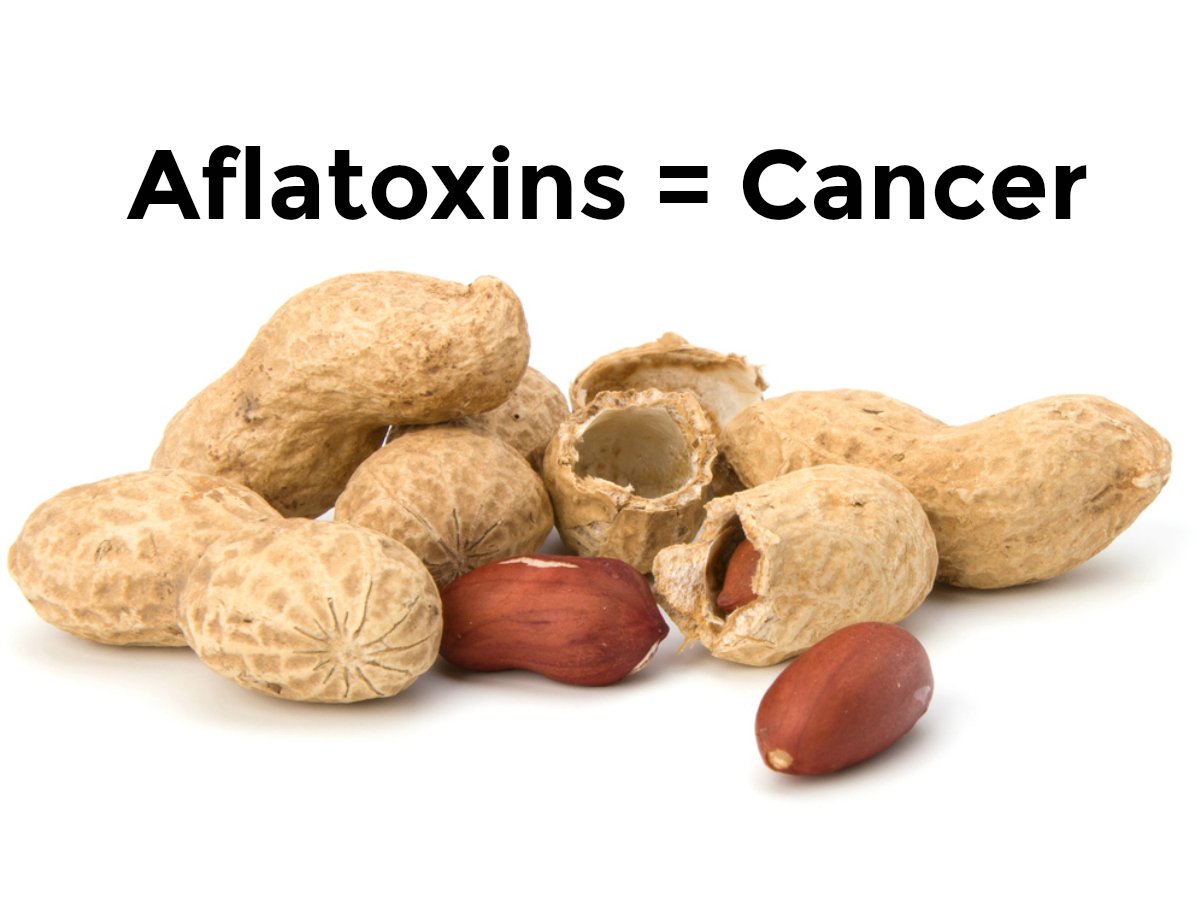 Unfortunately, cross-contamination is common in ice cream parlors because of shared scoops. It’s also a possibility in soft-serve ice cream, custard, water ice, and yogurt shops because the same dispensing machine and utensils are often used for lots of different flavors. Instead, do as you would for candy: Buy tubs of ice cream at the supermarket and be sure they’re made by a large manufacturer and the labels indicate they’re safe.
Unfortunately, cross-contamination is common in ice cream parlors because of shared scoops. It’s also a possibility in soft-serve ice cream, custard, water ice, and yogurt shops because the same dispensing machine and utensils are often used for lots of different flavors. Instead, do as you would for candy: Buy tubs of ice cream at the supermarket and be sure they’re made by a large manufacturer and the labels indicate they’re safe.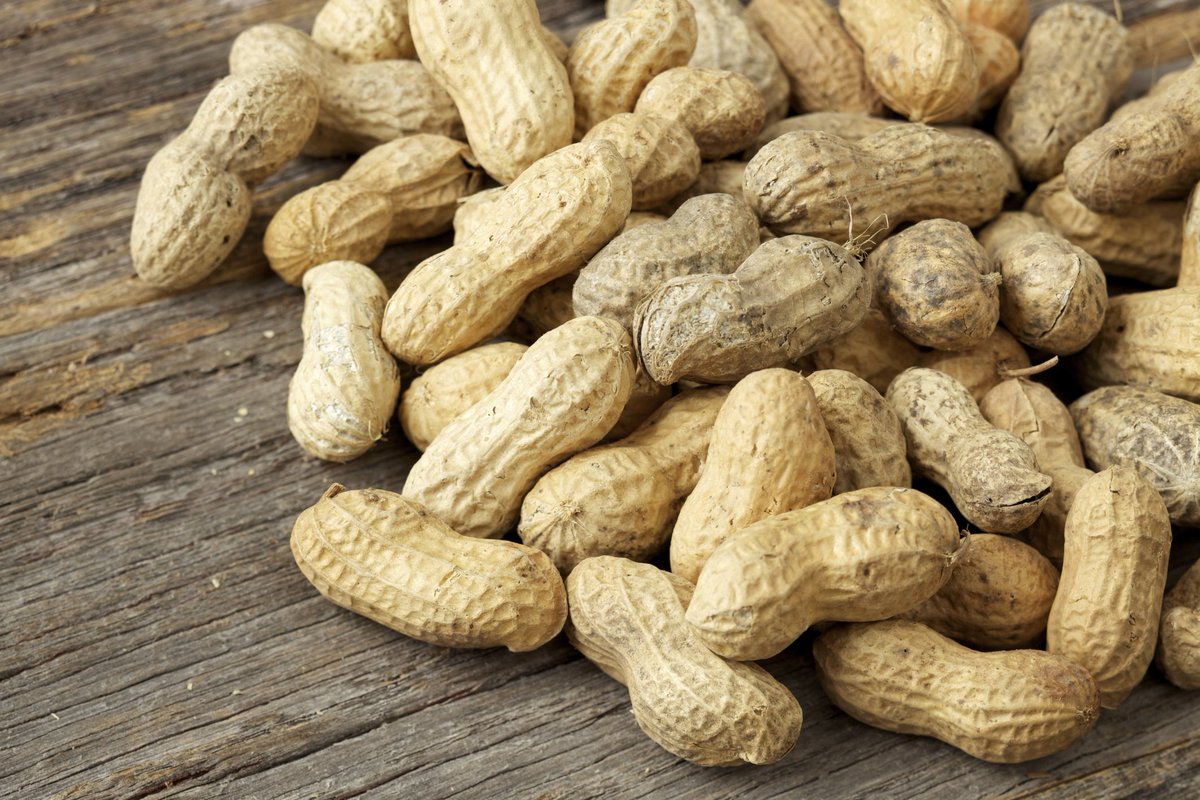
/peanut-allergy-smell-1324378-primary-recirc-6c67dd94103a4489b121122966eeb137.jpg) As you grow older, your digestive system matures, and your body is less likely to react to food that triggers allergies.
As you grow older, your digestive system matures, and your body is less likely to react to food that triggers allergies.